#if I had my way all my favourite fairy tales would be adapted by the jim henson company and the creature shop
Explore tagged Tumblr posts
Note
What if Disney adapted The Giant with the Three Golden Hairs?
There's no need! Jim Henson's The Storyteller already did an adaptation of this tale type and it is absolutely lovely.
Yes, it was made in the late 80's, but simplicity and whimsical practical effects are exactly what you need for fairy tale vibes! And it has this lovely misunderstood beastie bird!

Everyone in need of some fairy tale charm, please go watch it, the whole thing is on YouTube! (for now)
youtube
#jim henson's the storyteller#if I had my way all my favourite fairy tales would be adapted by the jim henson company and the creature shop#disney goggles#and my decided lack thereof
216 notes
·
View notes
Note
Hello Kim ! I love that you're a Sansa fan, I was wondering what your favourite Sansa quote is? And why do you think she is so hated compared to characters like Jon, Dany, Arya, etc ? Thank you xx
Thank you for asking about my favorite child! It's hard to narrow down a quote as my absolute favorite. I love it whenever she's sneaky about manipulating idiots like Joffrey without ever dropping her armor of courtesy. "He is a fool, you're so clever to see it! He'd make a much better fool than a knight" about Hollard, and "“They say my brother Robb always goes where the fighting is thickest. Though he's older than Your Grace, to be sure. A man grown” are perfect examples.
They're also examples of why so many fans dislike her. She's too subtle for them, and too nuanced (maybe the most nuanced character in the series?). The dislike started when she was framed in the very beginning as Arya's foil, when her motives were easy to read: marry the prince and live like in romantic stories of chivalry. Now we're all obviously supposed to be frustrated with her, as we would be if our little sister or daughter fell for such an obvious douchebag but had a head too full of fairy tales to listen to reason. That frustration doesn't mean we hate them; in fact, it's usually so frustrating because you love the little twits. Yet because Sansa was set up as a foil to Arya, the underdog tomboy to cheer for, most viewers projected those affectionate feelings onto her and Sansa was left as the antagonist.
In season 2, we get nonstop action, with Arya, Jon, and Dany slicing through folks and burning them....and Sansa just seems to sit there sad and mealy-mouthed in King's Landing? Weak!
So many fans were attracted to the pageantry and sensory overload Game of Thrones gave them, and to take the time to understand someone as quiet and diffident as Sansa appeared was just not going to happen.
Ultimately, Gillian Flynn said it best: “I like strong women” is code for “I hate strong women.” People watched GoT and decided for a woman to be equal, she had to commit violence, just like how men assert their masculinity. This hurts both Sansa and Arya in the show, I think. Sansa, with her subtlety and traditionally feminine interests, combined with the self-centered streak she showed in season one because God Forbid a teenager be self-centered especially since Arya isn't, was deemed too weak and annoying. Arya is the badass little ninja, but in the books, her descent into her darkest impulses because of the hell she's been through is...Not Good. Not empowering. She's a child. Sansa is a child. But because the way Arya survives and loses much of herself is cool and masculine-coded in the show, it's okay to rally around her. With Sansa, it's weak.
Unfortunately, a lot of Sansa fans go too far in the other direction, which I think is important to note. I've said this in another post, I know, but I just gotta repeat a distinct memory from when the show was at its height. More people were getting into Sansa, and her popularity was rising. Someone dared post their artwork of Sansa in armor and holding a sword. The reaction was ridiculous. "You're missing the whole point of Sansa's character if you give her armor and a sword!" First of all, Sansa is the most adaptable character in the series. Much like Elizabeth I, she would absolutely do that to boost morale at the very least. Second of all, people love to put women in boxes; to quote Succession, a lot of fans can't "hold a whole woman in their head."
Sansa is an example of "safe" femininity; she'll always be good and sweet and pure, a nice escape from mean women like Cersei, butch Brienne, tomboy Arya. Suddenly all the women just become these traits and aren't allowed to grow past them or learn to love other things. Maybe Sansa does learn to pick up a sword willingly, and finds out it's...kinda fun! Empowering, even!
No, there's nothing wrong with loving to sew, sing, and dream of romance. However, there is harm in internalizing that as the only things women can and should do. There's just something so infantalizing about the treatment of Sansa by some fans: "Our little Sansa always behaves like a lady".
I love Sansa because she isn't always likable. She has a lot of internalized misogyny, and she takes it out on Arya. She's so self-centered in her desires that she tells Cersei about Ned. She's also a child who we can safely assume was more strongly discouraged not to end up like Arya than, say, Arya was. This is her arc. I hate that it happens because of trauma, but her growth stems from Ned's death because it shows that deep down, this child wants home and family more than pagaentry. But because she couldn't say it with a sword, fans missed this.
14 notes
·
View notes
Text
Top 10 Favourite Middle Grade Books
I say middle grade, but I am including young YA too and at least one that is categorized as for children. Either way, this is my current top favourite books for younger audiences (I would say before the age of 15). I have read some of these many years ago and I haven’t reread them since so this is according to my memory of the feelings I had at the time. It is bound to change as I read more books. I don’t read many books for younger audiences nowadays, but I think they are charming and I have a soft spot for those published before the 00s because it feels nostalgic to me somehow.
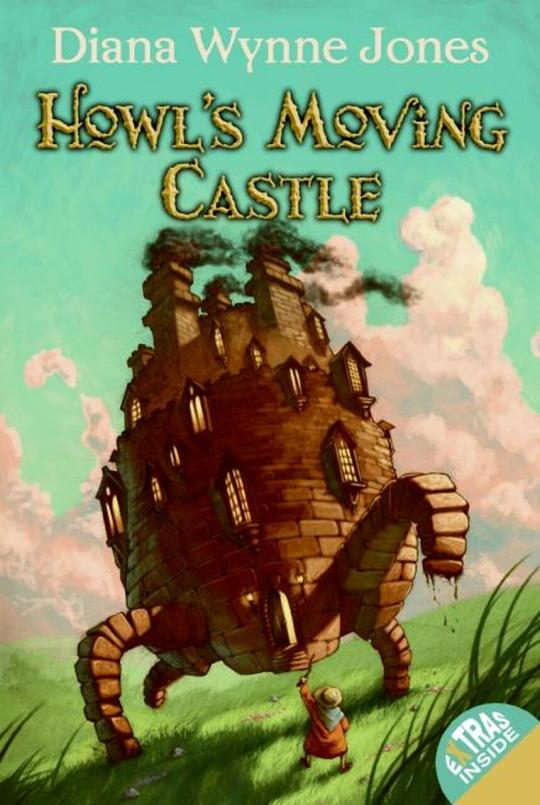

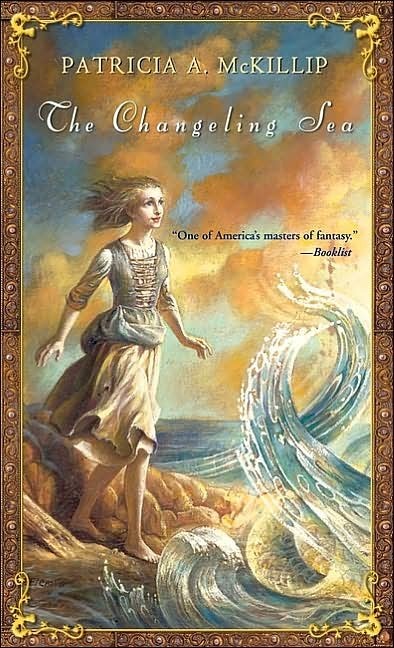

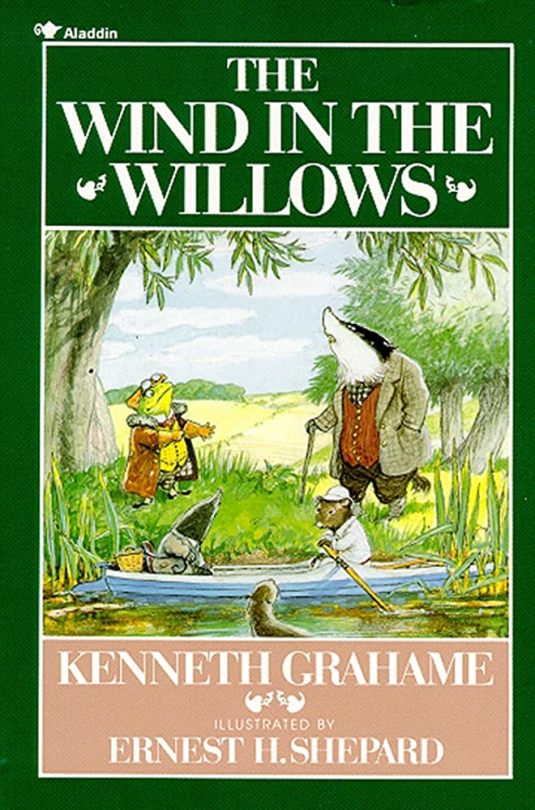

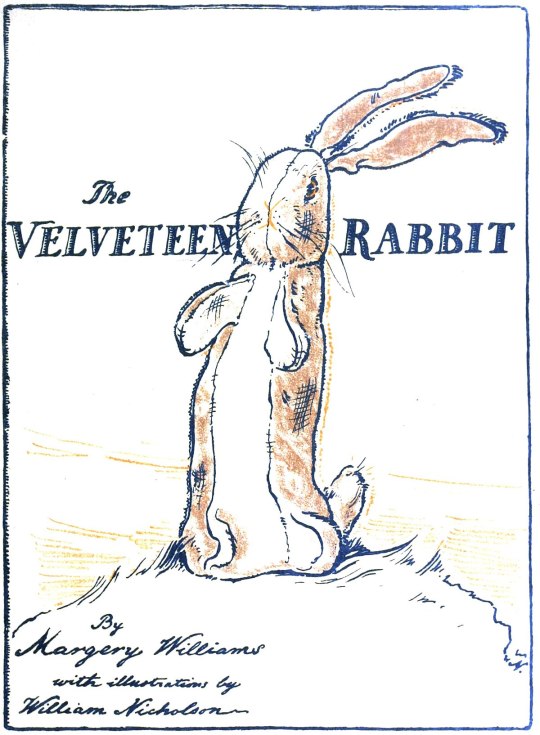

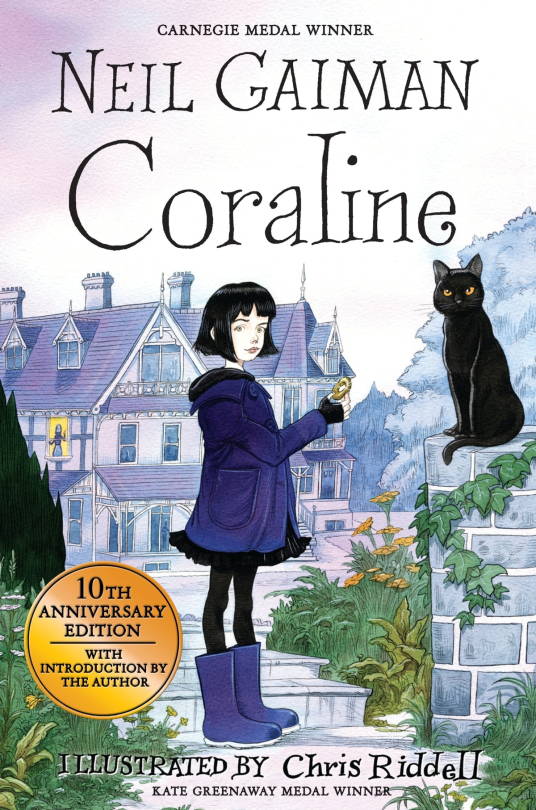
1 - Howl’s Moving Castle by Diana Wynne Jones
This is one of my favourite books in general. It would be in my top 10 favourite books of all time because I love the Howl, Sophie and the humour so much. I’ve watched the studio ghibli adaptation first and even though I thought it was beautiful visually I ended up thinking the story just ok and I found it weird that the second half was so much different from the first half of the movie. A few years later, a friend that loves Realm of the Elderlings made me attempt the book and since we have many media tastes in common I did. It was the best decision ever because I completely loved it. The characters have so much more personality and the story makes much more sense.
The book is about Sophie’s character growth, but Howl feels as equally important. It is very funny and I love the banter between the two main characters, but it’s also very creative and a little bit mysterious. It’s such an incredibly well plotted story about making your own destiny and finding your own power and it’s also about family and caring for others. It’s just a very charming book that I read 3 times already even though I read it for the first time only 3 years ago or so. It’s also really short so that helps.
“If I give you a hint and tell you it's a hint, it will be information.”
2 - The Chronicles of Prydain by Lloyd Alexander
I read this series of 5 books last year and this year I finished the short story collection. This series feels very nostalgic to me because it has many classic fantasy tropes. It’s a coming of age story about a boy named Taran that wants to go on adventures, but when he finds himself in the middle of that he just longs to go home and it’s also a story about magic leaving the world and the pain of those who left and those who stay. A very classic tale with some similarities to Lord of the Rings, beautifully told and it feels very cosy. It’s also inspired by Welsh mythology and it has morals woven into it for children, but done in a clever way.
I know I watched the Disney adaptation titled the Black Cauldron once as a kid, but I don’t remember anything about it because I didn’t care for the movie. From what I’ve heard they made a mess of trying to combine the first two books and it lost the charm of the source material.
“There is much to be known… and above all much to be loved, be in the turn of the seasons or the shape of a river pebble. Indeed, the more we find to love, the more we add to the measure of our hearts.”
3 - The Changeling Sea by Patricia A. McKillip
This is the only McKillip book I read that I think is suited for younger audiences. The other ones feel like older YA to me. A friend made me see the similarities this book has with Howl’s Moving Castle in terms of plot, but this book is not as funny. It is sad and sometimes melodramatic. It follows a young girl that lost her father to the sea as she gets involved in the mystery surrounding a prince. The girl works at an inn near the sea and I found the setting very cosy. The story is magical and tackles the subjects of greed, identity and family.
A lot of McKillip’s books feel like original fairy tales and are told in a lyrical prose. This is one of the most straight forward and easy to follow out of all her books.
“I don’t know what to do. What must I do? I belong to the sea and it will not let me in, and I cannot bear this land and it will not let me go.”
4 - The Last Unicorn by Peter S. Beagle
I enjoy the movie (which I once again watched many years before I read this), but I like the book more. The writing style is beautiful and the story, much like McKillip’s books, feels like an original fairy tale. It follows a unicorn that overhears that she is the last of her kind so she goes on an adventure to see if that’s true. She finds some companions along the way and there is an evil guy. On the surface, it’s a traditional fantasy story, but it has some little changes that make it more interesting. Once again, it’s a story about identity (I really like those) and can be a bit melodramatic.
“Take me with you. For laughs, for luck, for the unknown. Take me with you.”
5 - The Wind in the Willows by Kenneth Grahame
This book could be higher if it wasn’t for Mr. Toad. I really didn’t like him or the plot around him, but I love everything else so much that it is still currently in 5th place. The writing in this is really pretty and charming and the animal characters are adorable for the most part. I don’t even tend to like books about anthropormorphic animals, but since this one worked so well for me that I want to try more of those.
This is a story about the lives of four wood creatures. That’s it. It doesn’t seem like much, but I always enjoyed slice of life and scenes where the characters just talk and reveal bits of themselves so this was great. There is a lot of thinking about having a home and if it would be more fullfilling to stay in one place or to go on an adventure.
This book is put in all the cottagecore recommendation lists and for a good reason. It’s really nice and comfortable like a warm blanket (if you forget Mr. Toad exists, that is).
“Spring was moving in the air above and in the earth below and around him, penetrating even his dark and lowly little house with its spirit of divine discontent and longing.”
6 - His Dark Materials by Philip Pullman
So, this could be higher if the two books that followed the first one were as good. The first one is still my favourite, but I still enjoyed the other two (especially one particular scene in the last book). The first one was the only book in this trilogy to make me tear up though and books that make me cry usually get on the top of my lists. It’s just the way it is. I don’t think this one needs an introduction. The themes about religion are cool and I love Lyra and her mother.
Once again, I watched the movie first and I didn’t hate it (which seems to be an unpopular opinion). A few years after I decided to try the books because someone reminded me of their existence and they were pretty good. This placement in the top is mostly due to that first one though.
“The idea hovered and shimmered delicately, like a soap bubble, and she dared not even look at it directly in case it burst. But she was familiar with the way of ideas, and she let it shimmer, looking away, thinking about something else.”
7 - The Velveteen Rabbit by Margery Williams Bianco
This is probably the book I read the longest time ago on this list, except from the one in 10th place. All I remember about it is that the Velveteen Rabbit wanted so much to be a real rabbit and that it made me cry. I definitely need to reread it, but I remember really really liking it at the time.
“You become. It takes a long time. That's why it doesn't happen often to people who break easily, or have sharp edges, or who have to be carefully kept. Generally, by the time you are Real, most of your hair has been loved off, and your eyes drop out and you get loose in the joints and very shabby. But these things don't matter at all, because once you are Real you can't be ugly, except to people who don't understand.”
8 - Anne of Green Gables by L.M. Montgomery
I only read the first one and I am unsure if I will ever continue. If I do I will have to reread it. I remember really liking it, but it had heavy religious messages here and there. The tv show improved upon it. Still, it had a pretty writing style and the characters were really charming. I loved Anne and her adoptive “parents”, Diana and Gilbert. This is also another book that would fit in cottagecore lists. It has a similar atmosphere to The Wind in the Willows.
“People laugh at me because I use big words. But if you have big ideas, you have to use big words to express them, haven't you?”
9 - Coraline by Neil Gaiman
I remember the movie more than I remember the book, to be honest. I know that there were differences between the original and the adaptation but I only remember a few things. This was an interesting creepy tale and I liked it a bit more than The Graveyard Book so here it is. I need to reread this one soon.
“Now you people have names. That's because you don't know who you are. We know who we are, so we don't need names.”
10 - The Little Prince by Antoine de Saint-Exupéry
I haven’t read this one since primary school. I remember really liking it though and there was a fox in it, which was enough for child me. It had some really cute messages about connecting with others and I remember vaguely that every planet the little prince talked about had his own moral message, but I only remember the greed one. This is another book I want to reread soon.
“In those days, I didn't understand anything. I should have judged her according to her actions, not her words. She perfumed my planet and lit up my life. I should never have run away! I ought to have realized the tenderness underlying her silly pretensions. Flowers are so contradictory! But I was too young to know how to love her.”
#top 10 favourite books#top middle grade books#howl's moving castle#the chronicles of prydain#the last unicorn#the changeling sea#the wind in the willows#the little prince#coraline#anne of green gables#his dark materials#the velveteen rabbit#andi recs
23 notes
·
View notes
Text
Week ending: 12th March
No Christmas music, this week, thank goodness. We've still got quite a mix, though, with the return of two very different artists. And again, I'm left wondering if March 1959 was maybe just a slack period in teh charts, because the one that reached Number 1 is honestly kind of baffling to me.
Side Saddle - Russ Conway (peaked at Number 1)
I mean... it is what it is. Like Russ' last appearance, we're looking at a honky-tonk piano number, a bit Winifred Atwell, except without her signature janky tuning. We've got away from the [Insert synonym for party] theme naming, which would suggest to me that this track isn't a medley like so many of the other piano tracks we've heard so far - a suspicion that's borne out by the song, ultimately, since it does have a main tune that comes back and recurs. So that's something. But other than that, this is kind of just blandly jaunty, trotting along with an upbeat ice-cream van cheer.
It was used as part of the score for a British TV adaptation of the fairy tale Beauty and the Beast, which maybe explains its otherwise inexplicable popularity. Russ was apparently asked to compose it at quite short notice, and went with "side saddle" as a title, in order to conjure up a sort of old-fashioned feel, composing a song that he himself called an "olde-world gavotte". And I can hear that, I guess - there are more than a few echoes of the song "English Country Garden", for example. I would say that in my mind, with all the fussiness and piano fanciness it conjures up Jane Austen Regency era dances a bit more than it does Beauty and the Beast, tainted as I am by the 1991 Disney adaptation, where the story is quite clearly set in pre-Revolutionary France. But hey, it's not a million miles off, I guess? And when all you have is a piano...
It was apparently a much-requested tune on Housewives' Choice, which possibly tells you everything you need to know. Running from 1946 to 1967, the show was influential but I suspect never particularly "cool", as a sort of adult, middle-class radio version of Top of the Pops. And yeah, there's no way that anybody thought this track was cool. Catchy, perhaps. Fun, I guess. Cool? Eh...
My Happiness - Connie Francis (4)
If you've read any of my other posts featuring her, you'll know that I really like Connie Francis. And this was a Connie song that I didn't know, so I was pretty excited to hit play. And to absolutely nobody's surprise, it's good. We start with Connie singing with almost no backing, just her voice, close and intimate. And then, even better, she starts duetting in close harmony with a duplicate of her own voice, which she keeps up throughout, both Connies impeccably aligned, even as the backing instruments come in and the song develops into a sort of slow, jazzy country-tinged ballad. It's perfectly pleasant, especially with the slightly random saxophone and string touches that occasionally take over in the background, all of them carefully balanced so as to not overwhelm Connie's voice.
That said, I think of the songs we've had so far from Connie, it's possibly my least favourite, tied perhaps with Carolina Moon, which it does kind of resemble, come to think of it. Both songs have the same sort of country vibe, and both, more crucially, are just kind of bland? So far, Connie's been at her best when she's been given something fiery, or flirty, or even a bit angry. Here, she's left to trudge through lines about how evening shadows make me blue / When each weary day is through / How I long to be with you. Yawn. Every day I reminisce / Dreaming of your tender kiss / Always thinking how I miss my happiness. Ugh. Any place on Earth will do / Just as long as I'm with you. Boring. It's cliché on cliché, linekd with the most banal rhymes possible. And Connie, possibly understandably, sounds like she's not particuarly invested in the relationship. She sounds bored. You could argue that she's trying to portray the tedium of life without her love. But all the same, if you're looking for a vibe to sell your song on, "I really wish I were literally elsewhere else" doesn't feel like the most dynamic option.
It was enough to get the song to Number 4, still so perhaps I shouldn't complain. In fact, it did even better in the US, where it was only held off the top by the Platters with Smoke Gets in Your Eyes. Interestingly, both songs are doo-wop/rock and roll updates of much older ballads. Smoke Gets in Your Eyes was from 1933, and this tune was also written as an instrumental in that same year, 1933, by the brilliantly-named Borney Bergantine, and given lyrics in 1947. In the decade between then and 1959 it seems to have covered by just about everybody who was everybody. Which is interesting - I kind of asusmed the era of endlessly updated standards would end once rock and roll showed up, but it clearly hasn't, at least not as of 1959.
Neither of these songs massively thrilled me, but one definitely appealed more than the other. As much as I like some jaunty piano, Connie is a much more appealing prospect, even with this admittedly kind of meh song.
Favourite song of the bunch: My Happiness
0 notes
Note
Fic authors self rec! When you get this, reply with your favourite five fics that you've written, then pass on to at least five other writers. Let’s spread the self-love 💖
My lovely and wonderful @ruddcatha thank youuuu for sharing the love ♥️♥️♥️
This is... tough but in the best of ways. Because it's thinking about those stories that I am really proud of, because I pushed myself extra hard, tried something new, etc...
The Portal Between Worlds
This story is probably my favorite I have ever written. It was a complex plot with a lot of moving parts (and characters). I needed to plant the seeds and let this fic grow, hoping that at the end of the day, the action and the mystery and the layers would all work out. It was a blast to write, especially because there were so many character POVs, and I am so pleased with how it came out!
Wrath: Kikyō's Kill List
Kill Bill (specifically the first one) is one of those violently beautiful movies that I watch and watch and don't understand why I love it so much, and I desperately wanted to do something dark as hell. Writing it as Kikyō, and giving her the same tormented trajectory as the Bride was exciting, and really pushed me to the edge of my writing ability. 10/10 would write again.
Demonic Aura at the Shrine
I think we all have that special rock band AU in our heads, and this was my beloved one. I wanted to deal with the types of segregation and racism that happen in real life, all with a grumpy (and genius) Inuyasha in disguise. It's "that one story" that may get sequels every so often, because I love it so much.
The Sleeping Princess of Shikon Mountain
This story, written for @alannada's birthday, was the first time I really did try to write a long fairy tale. It was sometimes torture pulling the words from myself, but getting to adapt The Glass Mountain, and practice that new style (fairy tale voice FTW!) was entirely worth it.
Daiyōkai Only Dress in Couture
What can I say? This story was really wonderful to write and picture. I forever will be in love with tattooed photographer Inuyashas (winks at @cannibalsforbreakfast and The Fifth Flavor), and writing a story where Kagome was dropped into hostile territory and had to make a place for herself, growing and adapting, is a personal story for me. Add to that @kalcia‘s incredible talent? It was just... wonderful ♥️
Thank you again for the ask. It was fun thinking and looking back to see those stories that mean something extra special.
42 notes
·
View notes
Text
~ BL/GL TAG GAME ~
I got tagged by the wonderful @gunsatthaphan :) Thank you so much! I always appreciate those tag-games!
Your all time favorite bl character and why?
I haven't watched that many series yet, which is probably my salvation in the end. Does it have to be one of the main couples? If not I would say Namgoong Shiwoon (Light on me). He is just the best friend you could ever wish for and he doesn’t choose a side, but he always chooses to be happy. He is over the top and yet very authentic. I love him.
If it has to be one of the love interests I would choose Go Yoo Han (Color Rush), because he just doesn’t judge or Sarawat (2gether) because he is a caring teddy bear and I want one in my life or Noh Shinwoo (Light on me) because he ist just a lovely soul with a kind heart who broke mine during the series! I mean, come on? He was so kind!
What’s your one character from a bl you wanted to punt into the stratosphere (you only get one so choose wisely).
Uuuuhhhh...that is a hard one. There are some in my mind. I am very surprised at myself. I thought I would choose Tharn or Type, but no...
He’s just a support role, but I have to choose Green (2gether). OMG he was so over the top, toxic, didn't recognize boundaries and just wouldn't take no for an answer! I couldn’t stand him...but there are some more and the longer I think about it, the more characters come to mind...
The best music moment from a bl.
Every karaoke performance in Light on me, episode 13 :D Especially Namgoong Shiwoon‘s because he rocked the house, but the others were hilarious too!
What’s a popular heterosexual text that you would like to see adapted into a bl/gl?
Harry Potter? Or everything from Jane Austen? I don’t know. Most of the times I read bl/gl texts and not so many heterosexual texts...But I really want to read more bl/gl classic fairy tales!
A scene from a bl that always makes you laugh.
One scene that really got me off guard and let me laugh for minutes was the nail clipping scene in To my Star. Who on earth came up with this? I had to tell my best friend about it and I was laughing so hard she couldn’t undertsand a single word I said, but she was happy I had the time of my life. Don’t get me wrong, I love To my Star, but this scene was really unexpected.
Biggest disappointment.
Enchanté. I saw so many positiv posts about it and the rating is not that bad either, but in the end it was lame and the main was a spoiled brat with no character/character growth. A no for me.
What two random bl/gl characters would make hilarious exes?
Jin Hong Seok (You make me dance) and Kang Gook (Where your eyes linger) – they would be secret boyfriends… So secret that even they wouldn't know they were dating because they're both just so shy.
Who would be the funniest person to person to watch a bl in its entirety and which one would you make them watch.
I would love to watch The Miracle of Teddy Bear with @milkwaydreams as we both enjoy it and I guess we could have some deep conversation about it. Of course I would love to watch Cutie Pie with @gunsatthaphan, but we can skip the explicit scenes, I guess I can’t watch those with anyone, ever :D But I believe we would have so much fun with the rest! And with @softkuea it would be fun to just watch something wholesome like Bad Buddy or Light on me 😊
But as this won’t happen in this life, I would love to watch one with my lifelong best friend and I would drag her to watch To my Star, so she can finally understand, why I had to laugh that hard :D And after that TharnType and we can play my favourite game: One has to drink everytime someone apoligizes and one has to drink whenever one is beeing over the top romantic and corny. In the end we would be dead...but we had fun!
Best wardrobe moment/or character wardrobe from a bl.
Definitely every suit Lian is wearing in Cutie Pie. He is simply a feast for the eyes in these suits and especially in his yaoi way of standing.
But Tankhun (KP) competes with him in almost every scene.
-------------------------------------------------------
Thank you so much for tagging me!! <3
I’m tagging @milkwaydreams @softkuea @combeferret @ellaspore @multi-fandomms @pose4photo and of course who ever wants to do this :)
11 notes
·
View notes
Note
Hello again. What are the most appealing aspects of anime to you? what draws you in?
Hi again anon, hope you're having a good evening! XD Thank you for asking for my opinion, I hope I give an interesting answer.
Well, I don't like most anime fan culture. I find it unappealing and uninteresting. I don't like anime for the sake of anime, BUT I like a lot of anime, because it's very obviously artistic and thoughtful. Artistic and thoughtful enough for Black Swan or Inception to joyfully 'borrow' from Satoshi Kon, or equally considered too artistic and thoughtful in making live action adaptations such as Ghost in the Shell (2017). The director literally said the original film adaptation had too much philosophy in it and wanted to take that out. Gut the original Ghost in the Shell film of its thematic drive and you're left with shallow action schlock and no motivator. Oh wait, that's exactly what they did!
So anime as an artform is in this sort of weird position where you get anime films such as Angel's Egg or Ghost in the Shell (my two favourites) as being formative to video games and film, and other such bleedover entertainment (I'm pretty sure Angel's Egg really inspired the Dark Souls series - Ghost in the Shell, obviously, The Matrix) and then you kind of get that dismissal of anime as a serious medium for conveying ideas, because animation is for children. (My issues with certain anime probably has less bearing on the issue).
I think the conflation of 'animation is for children' is interesting because you can probably make the argument that it is true, in a sense; animation can reach heights of fantasy it's hard for live action to do, and fantastical things - especially bright and colourful stuff - is generally considered for children. I'm with C.S. Lewis on this one: 'Some day you will be old enough to start reading fairy tales again.' But I think most anime viewers would agree that with that heightened fantasy, you can also get some of the most out of this world stuff with adult themes conveyed appropriately.
The thing with animation too is that essentially every single shot is controlled, and is profoundly purposeful. This isn't something I'd immediately dismiss in live action (for instance, The Matrix does this a lot, though I would argue here this may be the anime influence) but I like thoughtful things, and I like metaphor a great deal. But on this front, I prefer hand-drawn anime. Which is ironic, since I'm a fan of R/WBY, but I actually just prefer the commitment to 3D animation. I find digital 2D very, very ugly, and I would rather just not watch it. In fact, most modern art-styles of anime I really don't enjoy at all. Little bug-eyed things which need to be swatted with a newspaper. I think the effort and the kind of texture you get from hand-drawn anime is like nothing else, and it distresses me when the swiftness of digital is prioritised over the artistry of hand-drawn. *shrug* I'm not the one being catered to anyway, so I'm not sure my opinion matters. (Obviously with R/WBY here as well, the 3D animation lets an independent team make their art, so you win some and lose some, but again, I like just the 3D).
So I'm very picky with anime, but I'm picky with most things in ways other people are not picky. Ater all, I'm a huge fan of R/WBY, and I've heard enough from people who don't like it. But we probably don't share anime opinions either. As I've noted before, Ghost in the Shell and Angel's Egg both utilise Jung in their storytelling, which I notice and am a fan of in R/WBY as well, so I'm not interested in the same sorts of traditional things. (If you're an Eva fan, you know it's packed full of Freud; Freud is a bit more unusual. Yes, I like Eva, I'm like that, but I don't want anything to do with the rebuilds. Icky. Leave old stuff alone).
But yes, I like anime the same way I like film. I wouldn't say I have an encyclopaedic knowledge of it at all; I just watch what I like. I've heard it all from anime fans before in high school about Bleach, Naruto, whathaveyou, and I don't like it, but I don't like the Marvel films, but that doesn't mean I don't like cinema.
(I promise I'm not a total contrarian. I am an avowed Reylo shipper, the most normie ship of all time - seriously, you should see the numbers on that ship, and how many people were into it that had never shipped before).
Anyway, I think animation is great, it's moving and very beautiful and thoughtful (I especially like the pacing, quite often) and some of my favourite moving picture shots are from anime. See my pinned post lol.
Also yeah I watched The Melancholy of Haruhi Suzumiya and Fruit's Basket when I was a kid online, after DBZ, before I knew the annoying kids at school who kept me captive at a sleepover to watch Naruto. (One of the girls went to school dressed up as Sasuke on no-uniform days and non-uniform days, though the others wore their Akatsuki cloaks). So they are kind of the exception to the 2D digital animation rule, but I haven't seen those in years. Also Haruhi Suzumiya is a weird one because it's obviously SO referential to other anime and watching it without a frame of reference is really funny. Also Fruit's Basket and yummy yummy monster romance, very formative. I remember watching a choppy 240p upload of Tohru confronting The Monster Boyfriend in his monster form in the rain and yeah, that explains a lot.
Anyway, big epic fantastical pictures.

My favourite shot ever of all time. I actually saw it the first time at a rescreening at the cinema. Walked out of there not the same.
#seraphina's asks#user: anonymouse#sorry in advance if I sound annoying stupid or pretentious or all three at once#I am just the way I am and my silly little blog is where I derive a tiny bit of joy
2 notes
·
View notes
Text
The Witcher: The Games vs The Books
Coming to the fandom this late, I can only assume the relationship between the Witcher games and the original novels has been long since talked to death by others. But I'm far too fascinated by the whole glorious mess that is this canon not to want to get down some of my own thoughts about how it all fits together.

See, on the one hand, the games (Witcher 3 especially) are arguably only too dependent on the novels to stand alone. They do a wonderful job of picking up a number of unresolved plot points the books left hanging, and a woeful job of explaining so much a player coming in cold would really like to know – Ciri's history with Geralt, Yennefer, her powers and the Wild Hunt itself just to begin with. This is an issue that only increases as the games go along: cliche as Geralt's amnesia may be, it's used to good effect to introduce the world to the player in the first game. By the third, Geralt has all his old memories back and two extra games worth of new experience, and good lord is it all alienating to the newcomer.
On the other hand, so much about the games (again, the third especially) contradicts the novels in painfully irreconcilable ways. That wouldn't necessarily bother me – adaptations are allowed to rework and reinvent, stories can and should evolve in the retelling – except, well, see point one above. So you're bound to come out of the games with a lot of unanswered questions if you haven't read the books, and just as many if you have.
Spoilers to follow, of course, for both the books and the games.
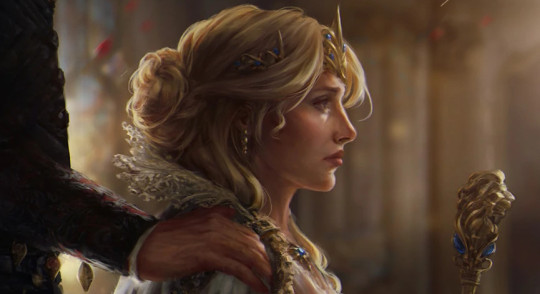
Here's one of the big ones: just how did the world – Ciri included – discover that one of her long-presumed-dead parents was actually alive and well and now ruling the entire empire of Nilfgaard? Fucked if I know. Neither the games or the novels have any explanation. In the novels, in fact, the world at large believes Ciri is married to the emperor of Nilfgaard. Naturally, this 'Cirilla' is a fake, but the scandal were the full truth ever revealed would redefine Emhyr's reign. Yet somehow, in the games, everyone seems to know he's Ciri's father, and that whole awkward incest angle is never mentioned. Continuity has been tweaked pretty significantly, and it's left to the player to guess how. If that wasn’t bad enough, the games apparently still included a Gwent card of the fake!Cirilla (artwork above) just to ensure maximum confusion.
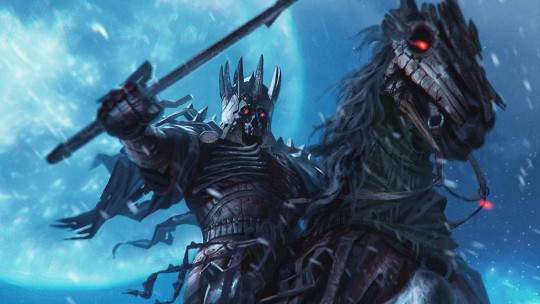
Before I get too sidetracked with all that stuff that doesn’t add up though, there really is a lot to be said for what does work about how the games expand on the plot of the novels. The Wild Hunt itself is the big one. The spectral cavalcade appears several times through the novels and hunts Ciri across multiple worlds in the final book before apparently losing her trail and vanishing to make way for the 'real' big bad, never to be mentioned again. While TW3 left me pretty underwhelmed by the revelation that the spectral Wild Hunt were just a bunch of dark elves in skull armor, the books had introduced the Hunt and let us spend some time on the dark elves' world before we get the reveal that the two may be one and the same. So for all the ranting I could do about missed opportunities regarding the Wild Hunt, they're the natural candidate for the games to pick up on as their new big-bads.
To my surprise, Geralt and Yennefer's "deaths" and subsequent recovery in pseudo-Avalon also comes straight from the novels. That everyone thinks Geralt dead at the start of the first game isn't, as I'd first assumed, a convenient excuse to have him reappear with amnesia, but simply how the novels end. Why Ciri leaves them and goes world-hopping isn't clear, but "because the Wild Hunt was after her again" is as good a theory as any. So, another point to the games there.
And there's so much more. The Catriona plague has only just appeared at the end of the novels, but we know it's posed for a major outbreak – one that’s in progress by the time of the games. The second game in particular does a terrific job of taking the ambitions of the expansionist Nilfgaardian Empire and the still-relatively-new Lodge of Sorceresses and building an entirely new conflict around them – even taking two of the least developed members of the Lodge (Sabrina Glevissig and Síle de Tansarville) and expanding them into major players. Dijkstra similarly ends the novels on the run from those in power, and having already taken the same assumed name 'Sigi Reuven' he's using in the games – while the books assure us that prince Radovid will grow up to pay back his father's assassins (ie. Phillipa) and become Radovid the Stern.
The twisted fairy tale origins of the novels are something the games actually seem to have gotten better at as they went on: the 'trail of treats' to the Crones is the great example, the monster-frog-prince and the land-of-a-thousand-fables of the expansions are two more, and many more are hidden in sidequests. And I'd be remiss not to mention that in again asking Geralt to pick a side in the conflict with the Scoia'tael, the first two games not only recreate a scenario Geralt repeatedly deals with in the books, but a major theme. It's interesting too how much the broad structure of the third game feels like an homage to the books, with Geralt searching for Ciri, interspersed with sections from her POV. You can nitpick the detail of any of these examples, but the intent is unmistakable, and a lot of credit is due for it in the execution too.

Some of the detail that's gone into translating the world of the Witcher books into the games is just insane – not just in the geography and history of the place, but right down to the names of the wine you can pick up. There's the fact the Cat potion makes Geralt see in black-and-white, or the fact the basilisk and cockatrice monsters are clearly based on the same model, but the basilisk is reptilian where as the cockatrice is more avian – which is exactly how Geralt describes the difference between them in The Lady of the Lake. There's a point where Book!Regis recounts a detailed list of all the lesser vampiric species, ending with the only two violent enough to tear apart their victims: almost all can be encountered in the games, and the last two (Fleders and Ekimma) are indeed the most animalistic. This kind of thing is everywhere.
My favourite examples tend to be those that blend into the background if you haven't read the books, but will get a grin from those who have, such as a peasant in Velen who will call out to Geralt (paraphrased from memory, alas) "Sir, sir! We be up to our ears in mamunes, imps, kobolds, hags, flying drakes... oh, and bats!" – which is a lovely little reference to a couple of conversations from Edge of the World wherein Geralt explains that most of the monsters the locals want him to take care of don't actually exist. Or all those soldiers chanting "Long live King Radovid!" – natural enough, but it takes on a whole new life if you've read the passage in Lady of the Lake where the young prince Radovid grumbles internally about having to sit and listen to the city chanting 'long live...' to every other notable figure present except him.

Really, it would be faster to list the things the games introduced that don't come from the original source material in any obvious form, because it's a struggle to come up with very many. The villainous Crones of Crookback Bog and Master Mirror of the Hearts of Stone expansion are the biggest ones that come to mind, along with a great deal of the vampire mythology from Blood and Wine. To the witchers themselves, they’ve added mostly game mechanics: the use of bombs and blade oils, the names of most of the potions, and three new witcher schools (all with their own specialised gear). There are a number of new creatures and monsters – Godlings, noon-and-night-wraiths, botchlings, shaelmaars and so on – and though trolls are mentioned in the books, the games take credit for giving them so much character. Obviously, there are new characters, like Thaller and Roche – but not technically Iorveth, because a Scoia'tael commander of that name is mentioned in the books, if only in passing. And already, short of just listing off every new character the games introduced, I’m running out of ideas. Credit where credit’s due on that front: most of the new characters and locations they’ve created feel authentic enough that Kalkstein or Thaller would be right at home in the novels’ world.
But for all their dedication to the detail, it's hard to feel like the games have really managed to capture the spirit of the books in their storytelling: the mundanely corrupt bureaucracy that does so much to bring the world to life, or their cheerfully cynical sense of humour, or the flamboyant wonder that is book!Dandelion, or their enthusiasm for putting women in positions of power, or the bigger themes about the differences between the story that gets sung by the bards and what really happened – or so much else from the novels that came as such a surprise to me when I started getting really sucked in.
And if we’re going to talk about all the little things they got right, it’s only fair to point out there are just as many little things they got wrong, and sometimes pretty glaringly at that. "I thought you bowed to no-one" says Emhyr to Geralt – almost as if book!Geralt doesn’t happily bow in most every situation where it would be polite or diplomatic to do so. "This would never have happened if the council was still around!" says Geralt upon finding a sorcerer's lab full of human experiments – as if none of his experiences with Vilgefortz or the wizards of Rissberg ever happened, back when the council was very much still around. In TW2, he mocks the idea of a woman like Saskia leading a rebellion – almost as if women like Falka and Aelirenn haven't led some of the most storied rebellions in history (and we can't even blame the amnesia, because Geralt himself mentions Aelirenn later – oh yeah, this one annoyed me particularly).
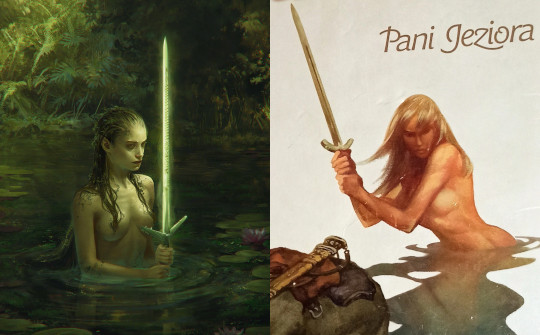
Book!verse 'Lady of the Lake' is basically just Ciri being surprised while bathing
Yennefer's studious aethiesm and willingness to desecrate Freya's temple is entirely in character – but only if we forget that she had her own personal religious experience with the goddess Freya herself in Tower of the Swallow. And then there’s the fact the Lady of the Lake is now a literal lake nymph who distributes swords to the worthy, as if no-one writing for the games ever got past the title of that particular Witcher novel (let alone got the joke). And the list goes on. It's easy to get overly caught up in contradictions like this – it's hardly as if Sapkowski's novels don't contradict themselves in places, as almost any long-running series eventually will – but it's going to stick out to those who’ve read the novels nonetheless.
While we're talking about how the games pick up where the books left off though, the big contradiction that has to be touched on comes in bringing Geralt back at all, at least in any public capacity. There's plenty to suggest that Geralt survives the novels' end and even goes on to have further adventures, but it's also pretty explicit that the history books record his death in the Pogrom of Rivia as final. The last two novels by order of publication (Season of Storms and Lady of the Lake) go so far as to feature characters far in the future with an interest in Geralt's legacy, and they discuss the matter in some depth. As far as the world knows, Geralt is dead.
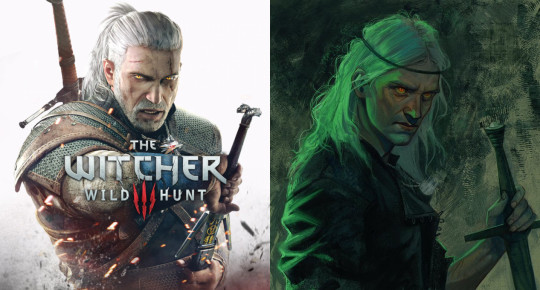
Book!Geralt fanart by Diana Novich
But it's hard to blame the games for ignoring this – true, thanks to Geralt's longevity, they could have set their conflict many more years after those future scenes – maybe even used Ciri's established time-travel powers to let you pop quietly in and out of the past (and, okay, now I've thought through all that, I'm kind of sad they didn't). But there comes a point where that kind of slavish devotion to preserving the source material really doesn't do a story any favours, and I'm not sure I could name any other successful adaptation that's bothered.
Besides bringing Geralt back at all, most of the bigger changes pertain to Ciri. In fact, as much as I'm about to get deep into the nitpicks below, you can make a surprisingly good case that the games have made only one really big change, and that's in simplifying the prophesies surrounding her. See, in the novels, all those world-saving prophesies aren't technically about Ciri, they're about her as-yet-unborn child. Who gets to impregnate her is the big driving force behind most of the villains of the books – one that all the main contenders seem to see as more of an awkward necessity rather than the inspiration for violent lust, but even so. To Emhyr, having to marry his own daughter is a bug, not a feature – but he's willing to do it to become the father of the savior of the world. But if Ciri is capable of fulfilling those prophesies herself, then Emhyr is already the father of the savoir of the world, and the revisions to his relationship with Ciri start to make a lot more sense.
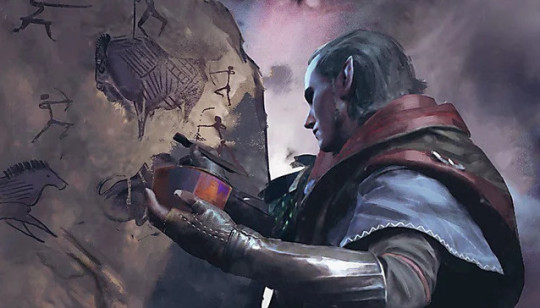
Ciri's history with the Aen Elle elves seems to have been similarly revised – if not quite so cleanly. Avallac’h and Eredin are, naturally, both book characters – in fact, a lot of personality has been left behind in the books, since Avallac’h originally had a rather camp flair, and Eredin is less the power-hungry kingslayer you might imagine. When Geralt meets Avallac’h in the books – which happens briefly in Toussaint, for one of those "everything you're doing is going to make everything worse because prophesy" conversations – he's busy decorating a cave with fake prehistoric paintings in the hope of confusing future explorers. (Surprisingly, there does seem to be official art of this moment on one of the gwent cards – see above – though the Avallac’h who jokes about adding erect phalluses to the picture and admits his vanity won’t allow him to resist signing it hasn’t entirely survived the transition to the new medium).
We also meet the former Alder King, Auberon, whose death we see in flashback in the game. (Fun fact: Auberon is actually blowing bubbles through a straw in a bowl of soapy water when we first meet him in the books, hence the straw in the illustration below. The books just have more whimsy than any of the games would know what to do with.)
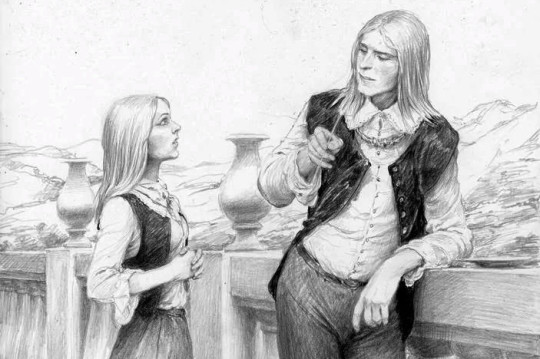
Ciri spends some time in the final book as a prisoner on the world of the elves, who are as keen as everyone else for their king to father her unborn child. Avallac’h eventually convinces her that this is all for the greater good: her child will be able to open gates to allow the people of her world to escape when the apocalyptic White Frost arrives. But their king, like most older elves, is impotent, leading to multiple nights where Ciri allows him to take her to bed (in some of the frankly more disturbing scenes of the series) to no result. Eredin, moreover, doesn't appear to have intended to poison the king: the vial that kills him was supposed to contain some sort of fantasy viagra, and even Eredin seems genuinely shocked to learn its actual effects.
Regardless, Ciri eventually discovers that Avallac’h and the Aen Elle have deceived her, and intend to user her child's powers to invade her world, not save it. Neither world is threatened by the White Frost for at least several millennia, it's just a pretext to make her cooperate. And so she flees, and Eredin (already leading his Red Riders aka The Wild Hunt long before he was crowned king) pursues her.
With the books as context, why Ciri would ever trust Avallac’h is very hard to understand. It's a little easier if that whole awful episode with her and the former king is subtracted out – Ciri's child is no longer necessary for Eredin's goals. So it's odd that the game still references the deadly vial Eredin gave to the king. Are we to suppose the vial genuinely contained poison in this version of continuity? I'd rather it didn't – Avallach's ruse is far more interesting if he underwhelms Eredin's support by revealing a half-truth – but the games aren't telling us.
And then we have to factor in that one last detail I'd forgotten when I originally started playing with this theory: TW3 does contain one last, dangling reference to the time the old king spent trying to impregnate Ciri, when Ge'els very reasonably asks why on earth Ciri would ever trust Avallac’h now. It's a damn good question, and the game offers no real answers. So in Avallac’h, we're left with a character who is vital to the final chapters of the games, who comes out of nowhere without the books as context, but whose role makes no sense with that backstory in mind. Frankly, the writers would have been much better off avoiding the whole mess altogether and inventing some new character to take Avallac’h's place.
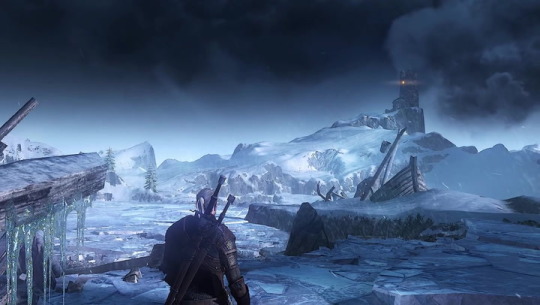
The treatment of the White Frost is even more confusing. The books are ultimately fairly explicit about just what the White Frost is: a ice age, most likely caused by the same mundane climactic factors that produced the real ice ages of our history. The only escape is intergalactic emigration, as Ciri (or her children) might some day enable.
In the games, the White Frost has instead become some sort of nebulous, free-floating apocalypse which will eventually reach all worlds, which is basically fine – up to a point. We briefly visit a dead world that the Frost has decimated, and even the Aen Elle are now supposedly planning to invade Ciri's world because it threatens theirs as well (I mean, apparently – their motivations are so underdeveloped you could miss them by accidently skipping just one or two lines of dialogue). When the Wild Hunt appears, it's always in a haze of cold. Their mages can invoke its power still more dramatically through portals which can freeze you in your tracks. So obviously, the Frost has already reached their world, and time is running out, right?
Well, no – you visit their world too (again, briefly – to meet a character who has never been mentioned before and won't be again, for reasons which have also never been mentioned before if you haven't read the books) – and there's no Frost in sight, apocalyptic or otherwise.
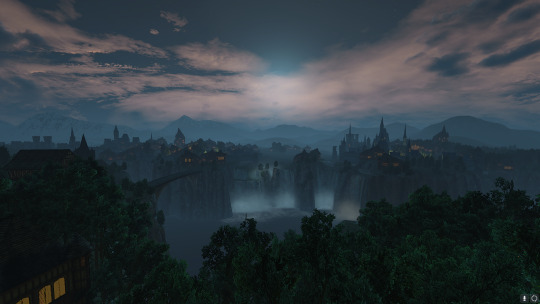
So why does the White Frost follow the Hunt around? No idea. It's never explained.
At the very end of the game, a second "Conjunction of the Spheres" occurs (possibly because of the Wild Hunt's appearance?), and the Frost begins to invade (or possibly Avallac’h summons it, so Ciri can go into it and destroy it?) It's all painfully unclear. The game is too busy pulling a bait-and-switch over whether Avallac’h's betrayed you to tell you what's actually going on instead.
But if Ciri could destroy the Frost completely (at great personal risk, but still) why is this not more clearly set up? Why did the Aen Elle think that escaping to another world (which will ALSO eventually be destroyed by the Frost) was a better solution than sending Ciri to face the Frost directly? For which matter, why do the Aen Elle need Ciri at all if sending enough ships to carry an army is no problem? Why does Ciri spend so much of the game questioning Avallac’h's true intentions, if they were ultimately so noble? When did he tell her the truth? If Avallac’h did summon the Frost, why did he pick that particular moment? And if he didn't, and it all just happened spontaneously, we're back to questioning why invading that world ever seemed like a good solution to Eredin – it all collapses in on itself.
None of these questions couldn't have been answered with a little creativity, but then the game would've had to dedicate some real time to explaining its backstory and developing its core conflict – something it's bizarrely reluctant to do. And if you think I may be drifting from the point a bit in the name of getting all my gripes about the ending down in one place, you're not wrong, but I feel Avallac’h and everything surrounding him is pretty much the ur-example of what doesn't work about the way The Witcher 3 depends on the novels: the backstory the writers are building on doesn't actually exist in any format available to the rest of us.
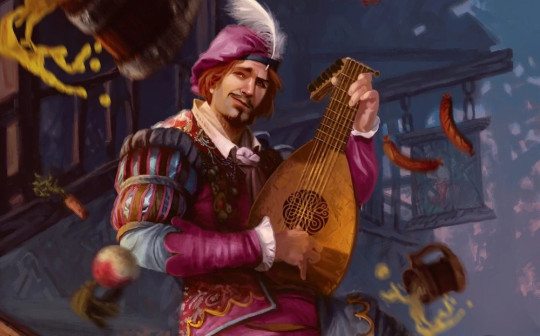
There are plenty of ways TW3 could have incorporated its backstory into its own narrative (yes, even excluding the method "by expecting people to read many many more pages of text from in-game documents", because that's bullshit and always will be). There are times it does this brilliantly, such as in the quest ‘The Last Wish’: everything you really need to know is covered in Yennefer and Geralt's conversation in the boat, and without ever making the dialogue sound unnatural. In fact, TW3 has even more options here than many works with the same problem, because Geralt is famous and people already think they know his story. You could have bards singing Dandelion's ballads, you could have characters confronting him with misunderstandings about his past to force him to correct them. You could also have Geralt visiting people and places he knows Ciri remembers fondly because of the time they spent there together, or include playable flashbacks similar to the time you spend playing as Ciri. You could stick chunks of backstory in optional sidequests or scenes old-school fans can skip through quickly. So many of my questions (how did Ciri get so close to Yennefer if they were never at Kaer Morhen together? Why has no-one tried training Ciri in her powers before? What does the Wild Hunt even do while it's not hunting Ciri? Why is Ciri princess of Cintra if her father is Emperor of another country altogether?) could have been answered so easily.
Seriously, summarising the Witcher books is not that hard. Lots of things happen, but only a fraction of it is really relevant in retrospect, and you could hit all the major plot beats in a handful of paragraphs. (Heck, I’d do it here if this post wasn’t already ridiculously over long.)
But then, TW3 has a bizarre problem with leaving so much of its best material off screen, even from its own story. It's criminal that we never get to see any of Geralt's time (or Yennefer's) with the Wild Hunt, even in flashback or dream sequence. This is material that directly sets up the relationship between the main hero and the main villain, and the most we ever hear about it is a few vague allusions to it being like a strange nightmare. Really? That's it? What was it like? Was Geralt in a trance, unable to control his own actions – was he brainwashed into believing he belonged there, or was he merely unable to escape? What atrocities might Eredin have forced him to commit? Did he visit other worlds? Was he paraded among the Aen Elle as a captive? There is no way this isn’t a part of the story worth talking about!
We never see the moment Ciri rescues Geralt from the Wild Hunt. We never see how Avallac’h convinces her to trust him, we never see the moment he was cursed, or any of her efforts to save him – all these big, story-defining moments are left off-screen, to be vaguely recounted to you later in dialogue. Then there's the entire political situation in Nilfgaard – you hear about it second-hand, and it's all resolved off screen. And the list goes on. Yet you and Ciri still have time to run around Novigrad so she can thank a bunch of throwaway characters you've never even heard of before, nor will again. The priorities on display here are baffling.
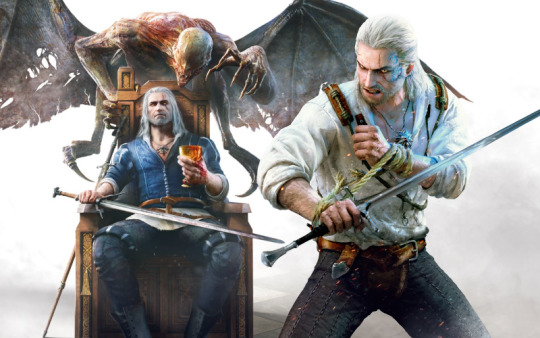
The Witcher 3 was such a wildly successful game that it’s obvious these sorts of issues didn’t seriously hold it back, and it’s such a big game that I could have sat down and written just as many words focusing only on the parts that do work without much difficulty. It boasts stunning visuals, addictive gameplay and some truly wonderful characters, and so many parts of the story work brilliantly in isolation that it’s strange to come out of it feeling that it ultimately adds up to so much less than the sum of its parts.
I’m glad TW3 exists – if it hadn’t been such a runaway success I doubt I’d ever have discovered Sapkowski’s universe at all, but for myself, TW3 will probably always be remembered as a somewhat-overlong introduction to the really good stuff, in the expansions and the original novels it came from. I looked up the novels after finishing TW3 in large part because I’d been left with so many unanswered questions – and I’m glad I did, but I’m honestly surprised more people weren’t turned off by TW3′s scattershot approach to its own narrative. You’re allowed to change and rework in moving to a new medium, but I can’t imagine it would’ve hurt games’ success to tell a complete story in the process.
99 notes
·
View notes
Text
Experiments in Writing: A Critique of Creative Work Within Queering, Feminism, and the Work of Sigmund Freud
For my creative work that I undertook in this module, I chose to focus on the idea of Queering. As well as this, I found myself influenced by the theories and works of Sigmund Freud[1], as well as using several feminist texts, both literary and theoretical, to try and establish a connection between the three ideas within my writing. Due to the essay Freud wrote on The Uncanny[2], he theories and ideas are already heavily tied to gothic literature as a whole, which made connecting him to my work a lot easier. I focused on short stories based upon fairy tales and attempted to alter the narrative of each of the original texts to suit the concept I had come up with. Based upon some of the work from lessons, I used a form of metalepsis[3]within my stories, trying to shift the perception of gender and sexuality within a gothic literate format. I was inspired to take this route by one of my favourite authors, a feminist writer called Angela Carter[4]. Her work in The Bloody Chambers and Other Stories[5] was a major source of inspiration for my work and helped me to develop my writing format and style throughout this module. I chose to focus my work on these theories as I felt that they were somewhat contradictory of one another, and I felt that the juxtaposition of these ideas would help to elevate my writing towards something outside of the usual style I worked in.
For my first creative piece, a short story titled The Wolves in the Woods, I wanted to focus mostly on several of Freud’s most infamous theories. The creative work itself was heavily inspired by a short story written by Angela Carter called The Company of Wolves[6]. I had read this story during college and found the way she addressed gender play and sexuality a fascinating plot device. Not only this, but the way that she would take fairytales that were commonly known amongst readers and adjusted the story to appeal to a wider feminist reading. I agree that a lot of fairytales have subtle sexist undertones that usually place women and men in specific boxes, and I enjoyed reading Carter’s reimagining of this.
Because of the theories I had been researching for the module, I found that writing influences like Carter were juxta-positioned with theories like Freud. One of the main theories I hoped to translate into creative work was the three agents of Freud’s idea of the psyche, often referred to as the ‘id, ego, and super-ego’[7]. As Freud explains, the id ‘contains everything that is inherited, that is present at birth, is laid down in the constitution — above all, therefore, the instincts, which originate from the somatic organization, and which find a first psychical expression here (in the id) in forms unknown to us’[8]. The ego and super-ego, on the other hand, represented the more intelligent side of humans, made of ideas like common sense and cultural norms and opinions taught to children by their parents and the society they live in. This concept of basic instinct versus the laws of society was something I could instantly connect to the gothic literature of Carter, as well as feminism and Queering due to their association with being historically against society’s idea of normal.
When I began to plot out my creative work, I realised that the entire concept of a werewolf was a literary device for man’s inner turmoil between instinct and reason, aka the id and the ego/super-ego. I attempted to flout the tropes of romance writing by presenting a werewolf who, unlike many other fictional interpretations, does not ignore the basic animalist instincts for his love interest. Rather, they compromise, accepting equal shares of idand ego, whilst completely casting aside the rules society sets, therefore ignoring the concept of the super-ego. By casting aside the rules that are hinted at through the story, the protagonist is freed, as shown by the ending of the story being ‘amongst the howls beseeching the night, was a woman’s cries of joy entering the chorus’[9].
Throughout the beginning of the story, the structure of the super-ego is important to the world-building of the setting. Another of Freud’s theories that I used for my first creative piece was the Madonna-Whore complex, which suggests that women either fit the role of the pure virginal wife, or the corrupted succubus. The implication of the theory is that women can only be one or the other, with the Madonna being the ‘preferred’ female archetype. In The Wolves in the Woods I allowed my protagonist to undergo a narrative transformation using the Queering literary device metalepsis. Judith Butler’s point on metalepsis helped to carve the character development in my work through her statement that ‘the performativity of gender revolves around this metalepsis… performativity is not a singular act, but a repetition, a ritual’[10]. Through my first creative piece, I tried to show a progression from a Madonna-like character to someone who embodies the whore, which is summed up by the end of my story in a paragraph ‘She is not the trodden women of the village, with their heads wrapped in silk, hidden from men and from the world. Now she sits upon the lap of the wolf, who stares at her with pupils blown wide, ears open and perked’ [11]and separates her from the other women, transforming her in just two sentences and completing the metalepsis.
However, this is not the only instance of metalepsis in this story. Whilst this is more of a metaphorical sense of metalepsis, the actual idea of a werewolf is a physical form of this literary device. This was another way of connecting the two characters. They both undergo some form of transformation and simultaneously must learn to adapt due to their place in the world. To make this clearer, I used repetition in the way they were described to further suggest the idea that their roles in society were different. These sentences, ‘Lycanthrope: the ability to shift, to transform, to adapt’ and ‘Woman: the ability to shift, to transform, to adapt’ were written this way because they also implied that both Lycanthrope and Woman were ‘things’ rather than people.
A major point to the majority of my stories was taking traditional gender roles within fairy tales and adjusting the narrative around them, which is one of the entire concepts behind the literary device of metalepsis. I did research on masculinity within fairy tales[12]- and gothic literature in general- and found a few feminist articles that discussed how these male characters were influenced by the masculine ideals of the time, and how it affects the narrative of the novels they appear in as a whole[13]. An essay by Alice Neikirk found evidence that ‘Rather than being a mere reflection of societal ideals, these fairytales perpetuate Christian, patriarchal concepts as a means of maintaining the gender hierarchy’[14]. I find that exploring fairytales through Freudian concepts was easy, as a lot of Freud’s theories focused on societal expectations and the way they can shape the human psyche. To an extent, fairytales, including my own, are a prose form of rules and morals set by the society who shares them, usually used as a form of control over children, mainly young girls.
Therefore, when applying psychoanalytical theories to my work, I attempted to subvert some of the typical rules set in fairytales by changing the roles of characters. An example of this is my final story, Eilidh’s Prince, which featured a lesbian romance whereupon one of the characters assumes the role of a man for a brief period. I felt that this was the best choice for the plot because of the symbolism of castration anxiety that is prevalent throughout the story. This is something I made clear when I chose to write the line ‘A fanged rose, a vertical grimace they cower from, lest it bite back’[15]. The idea of castration anxiety[16] is another of Freud’s theories, something he viewed as part of the uncanny. The idea is that men fear castration, perhaps as a punishment for their lust or simply the idea of becoming women, but I attempted to transform this idea by having a woman become a man temporarily, knowing the ‘fanged rose’ was not something she had to fear. I wanted to create a sense of dramatic irony that also came from Carter’s work. One story in particular that inspired me for this was ‘The Erl-King’ where the title character is described as ‘an excellent housewife’[17]. Through this, Carter has transgressed the usual boundaries of gender, and attributes feminine qualities to her male character. I took my version a little more literally and allowed my love interest to dress as a male.
For the other story in my collection, The Fae Prince and The Pomegranate[18], I also had used The Erl-King[19]as my main inspiration. However, unlike my two other pieces, this one was also partially inspired by historical mythology, which is another passion of mine. The mythology I chose to use for my work was the story of Hades, God of the Underworld, and Persephone[20]. Greek Mythology lends itself to fairytales as they could technically be considered a tale of their own time. Not only this, but I find that the nature of the Celtic myth of Fae is similar to the rules of the Underworld according to Greek accounts of Hades and Persephone. The main rule that comes to mind between both is that eating in their respective territories, according to legends, will force the victim to remain there forever. However in doing my research I found that certain myths suggest that Persephone had in face willingly gone to the Underworld, hence her name changing from Kore (meaning ‘the maiden’) to Persephone, which means ‘the bringer of death’[21]. The use of the pomegranate as a way of tying the Prince to the mortal girl and by extension her world was my way of applying both Fae rules and still using the mythology that I had used to construct the story’s foundations.
In conclusion, I enjoyed using these theories and influences to create my stories. I found that the use of experimental ideas and writing gave me more freedom than the usual styles I had been writing in. Comparing feminism and queering with the likes of Freud proved to be quite a challenge, but I feel that it paid off, as I have been able to create an unusual set of stories heavily inspired by authors’ works that I have long looked up to as gothic fantasy literature with heavy symbolism and use of metaphors and euphemisms that made the stories more interesting.
[1] Martin Evan Jay, "Sigmund Freud | Biography, Theories, Works, & Facts", Encyclopedia Britannica <https://www.britannica.com/biography/Sigmund-Freud> [Accessed 18 April 2021]. [2] Sigmund Freud, The Uncanny (London: Penguin Books, 1919). [3] "Metalepsis - Definition And Examples Of Metalepsis", Literary Devices <https://literarydevices.net/metalepsis/> [Accessed 18 April 2021]. [4] "Angela Carter", Angelacarter.Co.Uk, 2014 <https://www.angelacarter.co.uk/> [Accessed 18 April 2021]. [5] Angela Carter, The Bloody Chamber And Other Stories (London: Victor Gollancz Ltd, 1979). [6] Angela Carter, The Bloody Chamber And Other Stories (London: Victor Gollancz Ltd, 1979). [7] Saul Mcleod, "Id, Ego, And Superego | Simply Psychology", Simplypsychology.Org, 2019 <https://www.simplypsychology.org/psyche.html#:~:text=According%20to%20Freud%20psychoanalytic%20theory,id%20and%20the%20super%2Dego.> [Accessed 18 April 2021]. [8] Sigmund Freud, "An Outline Of Psycho-Analysis", 1940. [9]Shannon Hutton, Experiments CW1 [10] Judith Butler, Performative Acts And Gender Constitution: An Essay In Phenomenology And Feminist Theory (Baltimore: John Hopkins University Press, 1988) <https://www.jstor.org/stable/pdf/3207893.pdf> [Accessed 19 April 2021]. [11]Shannon Hutton, Experiments CW1 [12] Alice Neikirk, "...Happily Ever After (Or What Fairytales Teach Girls About Being Women)", Hilo.Hawaii.Edu <https://hilo.hawaii.edu/campuscenter/hohonu/volumes/documents/Vol07x07HappilyEverAfter.pdf> [Accessed 18 April 2021]. [13] "Masculinity In Victorian Gothic Novels", Ukessays.Com, 2017 <https://www.ukessays.com/essays/english-literature/masculinity-in-victorian-gothic-novels-english-literature-essay.php> [Accessed 18 April 2021]. [14] Alice Neikirk, "...Happily Ever After (Or What Fairytales Teach Girls About Being Women)", Hilo.Hawaii.Edu <https://hilo.hawaii.edu/campuscenter/hohonu/volumes/documents/Vol07x07HappilyEverAfter.pdf> [Accessed 18 April 2021]. [15]Shannon Hutton, Experiments CW1 [16] Sigmund Freud, "Freud: On Narcissism", English.Hawaii.Edu <http://www.english.hawaii.edu/criticalink/narc/guide5.html> [Accessed 19 April 2021]. [17] Angela Carter, The Bloody Chamber And Other Stories (London: Victor Gollancz Ltd, 1979). [18]Shannon Hutton, Experiments CW1 [19] Angela Carter, The Bloody Chamber And Other Stories (London: Victor Gollancz Ltd, 1979). [20] "Myth Of Hades And Persephone", Greek Myths & Greek Mythology <https://www.greekmyths-greekmythology.com/myth-of-hades-and-persephone/> [Accessed 18 April 2021]. [21] "Persephone: Goddess Of Spring And The Underworld", THEOI GREEK MYTHOLOGY <https://www.theoi.com/Khthonios/Persephone.html> [Accessed 20 April 2021].
#gothic literature#literature essay#literature#writing#writers#fiction#experimental writing#gothic writing#feminism#queering#sigmund freud#freud#psychoanalysis#writing community#academic writing#writer#write#creative writing#academic essay#academics#dark academia
16 notes
·
View notes
Text
So, I'm posting the new chapter for my fic tomorrow butttt
I wrote this and then decided it was way too over the top for the second chapter lol. So I've adapted it a little bit and I've turned it into a little one-shot, hopefully it runs okay as it's literally pulled from the middle of an 8k chapter.
The crew go out to see Flynn Dj and debut a new song then decide to save money and walk home.
or
Julie wrecks herself and Luke has to carry her home and then gets pulled into an impromptu musical number on the streets of LA at 3am.
Taylor’s interlude
Stumbling from the bar at just after three am, the group starts the trek back to Carrie and Flynn’s apartment, giggling to each other drunkenly. Luke starts forward and then glances back at the entrance to the club when he notices Julie isn’t following. “What’s wrong, Jules?”
Julie’s eyes study her toes as she rubs her bare arms with a frown. “I wore heels.”
“So did Carrie.”
“Yeah,” Julie grumbles her eyes finally meeting his green gaze. “But my feet hurt, and I can’t walk anymore. Carrie has like numb feet super-powers of something. If I’d known, we were gonna be walking forever I would’ve just worn my sneakers.”
She pouts at the boy, and he chuckles with a small nod, his chest filling with warmth for the drunk girl in front of him. Pulling off his oversized plaid jacket, he steps toward her, helping her slide her arms into the sleeves. He rubs her sides to help her warmup and she gravitates toward him naturally.
“Get on.” He orders with a grin, offering her his back for a piggyback. Julie doesn’t hesitate jumping on with his help, wrapping an arm across his chest and pointing the other in the direction of their friends who were already a full street ahead.
“Onward!”
Luke gallops around, quickly catching up to the others who watch the pair with affectionate smiles. Alex rolls his eyes, when would they just admit they were in love already?
They are nearly back to the apartment, having fallen behind the group again, they spent the time chatting freely about their favourite songs played that night and what they thought of Flynn’s new song, which she had debuted at the club. Julie learned Luke had helped her write it and Alex and Reggie had helped her mix it. Luke was explaining the process of them working together for the first time when Julie suddenly starts humming in Luke’s ear.
“Are you humming Taylor Swift?” Luke asks the girl on his back amused, forgetting about his story. Julie takes his acknowledgment as permission to start singing the lyrics loudly.
Luke chuckled at her little change from ‘six’ to ‘three’ and joins in for the bridge. The rest of the group slowing down to listen. Reggie twirls Alex under his arm.
Today was a fairy-tale
You were the prince
I used to be a damsel in distress
You took me by the hand, and you picked me up at three
Today was a fairy-tale
Alex recreates the beat with his hands slapping on his chest while Reggie and Carrie supply soft harmonies to Julie and Luke who take turns singing a line of the chorus. Flynn snaps her fingers in time, humming the tune softly.
Time slows down
Whenever you're around.
“Put me down and take the second part of the next verse!” Julie whispers to Luke, her eyes closed as she sways to the beat their friends had created. With a chuckle, Luke releases Julie carefully and she launces into the second verse, twirling under Luke’s arm so she could walk backwards in front of him. Luke watches her with a fond smile, his hand staying in hers just in case she trips.
Can you feel this magic in the air?
It must have been the way you kissed me
Fell in love when I saw you standing there
It must have been the way
Today was a fairy-tale
It must have been the way
Today was a fairy-tale
Luke takes the second part and briefly thinks to himself that their voices worked together perfectly. His chest fills with an warmth when this pretty girl sings to him, her eyes sparkling happily.
Today was a fairy-tale
You've got a smile
Takes me to another planet
Every move you make everything you say is right
Today was a fairy-tale
Julie skips ahead when the bridge starts again, letting go of Luke’s hand and twirling around with an assist from Reggie before she stomps her foot in time to the start to the chorus, launching into a duet with Alex.
Today was a fairy-tale
All that I can say
Is now it's getting so much clearer
Nothing made sense 'til the time I saw your face
Today was a fairy-tale
Julie was truly captivating as she belted out the final vocalisations. She looked so free standing in front of her best friend in Luke’s oversized jacket, grinning from ear to ear.
Time slows down
Whenever you're around
I can feel my heart
It's beating in my chest
Did you feel it?
I can't put this down.
Today was a fairy-tale
Reggie and Luke whoop and cheer as loud as they can, and Alex slaps his knees with a grin while Flynn and Carrie clap and laugh. They were only a minute away from the apartment by the time they finished and a loud voice from a house across the road reminds them that it’s 3am and belting Taylor Swift is inconsiderate, even in LA.
“I’m sorry ma’am!” Julie calls with a light slur from her spot under Luke’s arm. “But when Taylor Swift calls, you listen! You have to understand!” Luke can’t help the laugh that falls from his mouth, which he quickly stifles under what he is sure is the glare of the older woman.
“I wonder if the cops will be understanding of your little explanation.”
“Oh, shit!” Alex curses, hurrying everyone along and whisper shouting a ‘sorry’ behind the giggling group.
#this is so rough but I didnt want to just delete it#seriously though#ive been listening to taylor swifts fearless album ALOT like i should be ashamed but it just slaps so hard#julie and the phantoms#julie and the himbos#jatp#luke patterson#luke jatp#julie molina#julie jatp#juke fic#juke#julie x luke#jukebox#fanfic
21 notes
·
View notes
Note
Do you have any favorite regional differences in one myth? Or any fave regional differences in creatures (eg. The different ways to become a werewolf based on where and when you are)
Comparing similar folklore from region to region is always great! But I think my favourite at the moment is the one I discovered most recently, namely the Sicilian version of what most people know as the Grimms' All-Kinds-of-Fur.
In the Grimms' version a princess escapes from having to marry her father (because she is the only one as beautiful as her late mother), by disguising herself in a cloak made of a thousand kinds of fur. She is found by a king who thinks she is an animal, when it turns out she is taken to the palace as a lowly servant. One day she takes of her furry cloak and dresses as a princess again, to go to the king's banquet. He instantly falls in love with her and after two more banquets manages to discover All-Kinds-of-Fur and the beautiful princess are one and the same.
Now the version of this story I fell in love with as a kid is the adaptation in Jim Henson's The Storyteller: Sapsorrow/Straggletag, where they make the relationship between the young King and Straggletag more equal by letting them talk extensively while she's in her disguise and scold him for his pride and vanity. He does not win her until he has proven he respects Straggletag as well as the princess she secretly is.
So imagine my joy when I read a variant of this tale type called Betta Pilusa in Zipes' translation of Laura Gonzenbach's Sicilian Fairy Tales and it goes like this:
After going through the usual method of trying to delay a marriage to her father (asking for three impossibly beautiful, expensive dresses) this young lady (not a princess) asks for a dress made of grey cat fur and escapes to a forest.
A young king goes hunting there and almost shoots her, until she reveals she is not an animal. He asks her name, she says its Betta Pilusa (translated as Hairy Bertha). He asks her if she wants to come to the castle. She says yes, as his maid. He asks where he wants to live, she says in the chicken coop.
The king visits her at the chicken coop every day to talk to her and bring her treats.
He asks if she want to come to the royal ball, but Betta Pilusa grumbles at him that she could never go. Of course she does go, dressed in her first gown, but disappears before the king can stop her.
The first thing the king does is going to tell Betta Pilusa about the mysterious lady and she scolds him for waking her up.
This happens three more times. With the king inviting Betta Pilusa each time and her grumbling and growling at him and then scolding him when he confides in her about how in love he is.
Finally the king is so lovesick that Betta Pilusa bakes bread for him, every time hiding a golden trinket inside it which the king had given to the mysterious lady at the ball.
The cook reveals to the king that it was Betta Pilusa who baked his bread and he finally confronts her and declares that she is the mysterious lady.
Betta Pilusa denies everything and they argue until he resorts to threatening her with almost comical theatricality, after which she dramatically throws off her catskin gown and falls into his arms.
They get married and live happily ever after.
No recap would do it justice, but Betta is so feral (also in her interactions with other servants) and the young king is so honestly interested in her. It's so fun and I'm here for it.
#fairy tales#sicilian folklore#donkeyskin#straggletag#allerleirau#all-kinds-of-fur#laura babbles#sapsorrow
45 notes
·
View notes
Text
Okay, so in the Enchanted Kiss Sidequest, Dumbledore mentions that the, er...“Play of Ill Fortune” was such a disaster when it was put on when he was Transfiguration professor that no plays have been attempted since. Would you like to know more about that? Well, in the real-world copy of The Tales of Beedle the Bard, we get some notes from Dumbledore on the fairy tale in the book explaining:
“The Fountain of Fair Fortune” is a perennial favourite, so much so that it was the subject of the sole attempt to introduce a Christmas pantomime to Hogwarts’ festive celebrations. Our then Herbology master, Professor Herbert Beery, an enthusiastic devotee of amateur dramatics, proposed an adaptation of this well-beloved children’s tale as a Yuletide treat for staff and students. I was then a young Transfiguration teacher, and Herbert assigned me to “special effects”, which included providing a fully functioning Fountain of Fair Fortune and a miniature grassy hill, up which our three heroines and hero would appear to march, while it sank slowly into the stage and out of sight. I think I may say, without vanity, that both my Fountain and my Hill performed the parts allotted to them with simple goodwill. Alas, that the same could not be said of the rest of the cast. Ignoring for a moment the antics of the gigantic “Worm” provided by our Care of Magical Creatures teacher, Professor Silvanus Kettleburn, the human element proved disastrous to the show. Professor Beery, in his role of director, had been dangerously oblivious to the emotional entanglements seething under his very nose. Little did he know that the students playing Amata and Sir Luckless had been boyfriend and girlfriend until one hour before the curtain rose, at which point “Sir Luckless” transferred his affections to “Asha”.
...Can I just comment on how very lucky Professor Flitwick was that MC and their co-star were completely devoted to each other? Otherwise we could’ve had a similar debacle! This is honestly why -- as a thespian -- I have to chastise the concept that it’s a good idea to deliberately cast two halves of a couple as romantic co-stars. The whole point of acting is to place yourself in the shoes of someone else -- although yes, there’s such thing as type-casting and admittedly it is easier to act emotions that feel authentic, real actors should be able to take themselves out of the equation and be someone else for a performance. Perhaps if that was encouraged, rather than (from the look of it) both Flitwick and Professor Beery casting students in roles based on real-life romantic chemistry, then maybe the disastrous performance of the Play of Ill Fortune wouldn’t have gone down the way it did. The actors playing Amata and Sir Luckless would’ve been able to put their romantic drama aside enough to perform their roles without destroying the whole play for everyone else. Obviously teens will be teens and all that, but even in my own high school theater club, we came together despite our personal dramas to put on the best show we could, for the love of the craft and for the sake of the audience. Acting shouldn’t be about acting with a specific person -- it should be about coming together as a team to tell a story to a whole audience of people who long to be told a story.

#*gets off soap box*#hphm#hogwarts mystery#opinion#albus dumbledore#filius flitwick#this is ALSO why this play shouldn't have just had two performers!!#give us a whole cast!!#I almost want to come up with an au one-shot of carewyn having to fill in the role in flitwick's show at the last minute#if for no other reason then to do some friendship fluff with a touch of carion because obviously XDD#this gif also makes me think about how sweet it would've been if we had a larger cast and it wasn't just restricted to fifth year and up!#drama club when I was in school was fun because freshmen sophomores juniors and seniors were all equals on the stage!#sure juniors and seniors had more seniority and often got bigger parts but we all worked together#I made so many friends outside my class just by being in that club#imagine little cedric and beatrice helping out in minor roles in the show!#or fred george and percy!
17 notes
·
View notes
Note
001 - Kingdom Hearts
Favorite character: On the villain side: VEXEN IS BEST ORGANIZATION XIII MEMBER. Shoulda stayed evil, though. I like it when he complains and screams about everything and hates everyone. He's one of my favorite villains, just, like...in general. So fun to write. Also attached to Demyx, but I actually liked him more in III than II because it reminded me of my rawr lolspeek weeb days when I f/o'd him without knowing what f/o'ing was and then transitioned this to shipping VexDem like heck. On the hero side: MY GIRL KAIRI! But honorable mentions go to Sora, Riku, Aqua, Ven, Terra, Xion, Roxas, Lea, Ienzo, any Disney character I loved beforehand (this is way too fuckin many to list), Merlin (OKAY I WILL SINGLE HIM OUT), Yen Sid (I'LL SINGLE HIM OUT TOO), you know what let's also single out the Mickey+Donald+Goofy power trio...just...any KH hero who isn't part of the Yozora stuff or the KHUX stuff. ...Except I also LOVE Strelitzia, and she is the only KHUX-exclusive kiddo I care about but I care about her MANY. (Oh, and there's a least fave I have who's a "hero" but that's a debatable label). I would go on about why I love all of them but...that's too many characters to elaborate on
Least Favorite character: See, I think the real answer is Yozora, but the thing is I just tend to forget about him or not care (unless I'm doing a weird AU where he's Noctis' bratty Nobody, don't ask). He kinda represents the Shark Jump and I don't like watching that scene where he literally petrifies Sora for not being strong enough. But again, I can just kinda forget about him if he's not fed to me through a social-media unit. The one I LOVE TO HATE is Master Eraqus. The man actually triggered me back in the day. He is purity culture. He is the overbearing parent who will not accept you unless you are perfect. He is by and large the reason VAT didn't communicate with each other properly. He was the one who taught Aqua to think in absolutes. He lied to Ventus for years and then insisted to kill him was the only option, and then, when Terra tried to defend his brother figure/friend without knowing WHY Eraqus was doing such a thing, Eraqus didn't offer an explanation and instead switched targets to Terra citing that the problem was Terra's lack of OBEDIENCE. Eraqus is just very "my way or the highway" and uses his moral high horse to justify doing things that utterly lack compassion in any regard, which is something that GETS to me on a deep level, and let me tell you, I hated him for so long until I realized he was actually a super fuckin fun guy to imagine as a Bigger Bad in AUs that either have the KH protags teaming up or have villain protags needing a "greater good lawful evil" figure. And I just have found too many good memes about him cheating at chess and killing children. I have to laugh. Making fun of him is fun. He's a ridiculous character. That said, this recent trend of "erase everything bad he ever did and paint him as the ultimate hero of the saga" makes me raise eyebrows for SEVERAL reasons
5 Favorite ships (canon or non-canon): VexDem, SoRiku, Kairi x Jaune Arc (RWBY), Aqua x Rosalina (Super Mario Galaxy) x Bayonetta, IsaLea, Ventus x Papyrus (Undertale), that was six but they all needed to be mentioned
Character I find most attractive: Ienzo. HOO BABY he is adorable. I saw someone make a Valentine's Day gifset of KH and FF characters shortly after III dropped and seeing his smiling face paired with a romance quote made my heart FLUTTER
Character I would marry: Probably Ienzo, see above. He's also a very kind guy. Favorite redemption in the modern era.
Character I would be best friends with: I hope the Destiny Trio would adopt me into their friend circle the way they've tended to do with every other inter-world denizen they've come across. I would love to have them as my positivity squad. Or, y'know, two positivities and one "it's okay to screw up" guy. Just. I would love to hang out with them. I often worry that I'm unlikable to my faves, but even though I would usually prefer to hang with the villains, I can pretty much guarantee these three would be open-minded about me. (Do I kiiiiinda wanna be friends with Vexen though? Of course I do. He'd hate me but maaaayyyyybe he would see me as one of his pet idiots who makes him look smarter, and we could bond over our fragile egos?)
a random thought: You ever think about that one NPC lady in Traverse Town who refused to tell you where she was from because it was none of her business? You ever wonder where she WAS from? What her world was like? How she ended up being the survivor of the Ansem Apocalypse when it hit her? All I know is that when I read her lines out loud (I used to read KH speech balloons out loud all the time), I gave her a Southern accent for no discernible reason and I stand by it. That woman has a twang.
An unpopular opinion: I don't want KHUX to be canon because I feel it's smaller-scale and takes a lot of mystery out of the worldbuilding. I always assume that the KHverse just includes ALL worlds in fiction, and that includes their thousand-year histories, meaning the Age of Fairy Tales should've happened long long long LONG LONG LONG ago and not five generations. And whatever screwed up the world should've been more than just five people having a fight, and whatever saved it should've been more than just five people getting along, and Daybreak Town really suffers from having to stick to mobile-friendly graphics and therefore is the least aesthetically attractive KH town ever, and I don't like that Lauriam and Elrena used to be such selfless people. I do still love Strelitzia because she's shy and relatable and quirky (sitting on the roof) and she questions authority and if you go with shipping subtext she's probably bi (or pan?), but I don't like the "Lauriam's dead sister for his arc's drama" bit. I liked when Marluxia was angry because he wanted to run Organization XIII but it was in the hands of an idiot who wasn't him. And more than anything I just like imagining that the Age of Fairy Tales was something bigger, further in the past, and more mysterious than something designed for a mobile game. Scala ad Caelum, however, I like a lot better because there IS a lot of mystery there and also it's a very pretty town with an amazing design.
my canon OTP: I really only count the Disney couples as the "canon" ones, so this is a question of picking my favorite Disney couple that shows up onscreen. I hope I'm not forgetting an important one, but I think the title has to go to Aladdin/Jasmine, which is always perfect in everything. (This would be an ENTIRELY DIFFERENT STORY if KH had ever adapted Treasure Planet, and if it ever gets the mind to adapt Treasure Planet then even if I don't care about that game I will immediately declare that Amelia/Doppler takes the KH canon OTP crown. *taps watch* Get on it Squenix)
Non-canon OTP: SoRiku, which I counted as "basically canon" after DDD until III decided it wasn't sure. But I'm just a sucker for how DDD is the two of them all "HE'S GOT MY BACK AND I'VE GOT HIS AND I'D DO ANYTHING FOR HIM SO LONG AS HE'S HAPPY." It's just the best kind of Friends-to-Lovers, except when you take all canon into account it's Friends-to-Rivals-to-Enemies-to-Friends-to-Lovers and that's a very juicy dynamic. BUT ALSO: VexDem, which is a nostalgia ship SO STRONG I had to accept that it eclipsed my former Vexen ships by a mile and I wanted to go back to my roots. That one, I have a much longer essay about that I'll just have you refer to so I don't repeat myself for pages. To make a long story short, their scene in III was JUST DELICIOUS.
most badass character: OOF THEY'RE ALL BADASS but in the end it's between Sora and Aqua, because Sora gets the widest RANGE of abilities across the series that he masters while Aqua gets the most POWERFUL abilities due to her Mastery (Command Styles seem like they'd be the most OP things ever in-universe and I'm here for it because flashy battle moves make brain go brr).
pairing I am not a fan of: SOKAI, Xehaqus, RikuNami, Vanitas/anyone not evil
character I feel the writers screwed up (in one way or another): OH BOY. KAIRI THE MOST. YOU ALL KNOW WHY: lack of screen time, Fridging for drama, forced romance to invite death flags (they really wanted to milk that death to get people talking didn't they?), giving Alyson Stoner ZERO direction to actually follow up on Hayden Panettiere's performance. But then I remember that they made Vexen redeem and lose his entire personality and I just...uuugghhhh. I can't believe he died twice in this series. And then Demyx is FUN but also I know he's flipped sides as well, which means he won't be fun much longer! Xehanort seems to switch motivations to whatever makes him the biggest threat (and several of Eraqus' old flaws seem to be mysteriously glued onto him), Sora isn't a motormouth anymore, Riku just doesn't get anyone who cares about him anymore because everyone's distracted by Sora and Kairi, IS ANYBODY GOING TO ADDRESS THE ACTUAL ISSUES THAT DROVE THE WAYFINDER TRIO APART, oh God Marluxia and Larxene you're good guys now what have they done to you
favourite friendship: I really like each of the trios. But you know what's even BETTER than the trios? If you put...all of the trios together...meaning Sora, Riku, Kairi, Mickey, Donald, Goofy, Aqua, Terra, Ven, Roxas, Xion, Lea, Hayner, Pence, Olette...and then you added Isa back in there...and you gave them Ienzo...and you brought back Naminé...and you say that Subject X is Strelitzia and you have her turn back up so she can have justice done...AND YOU HAVE AN ULTRA KEYBLADE GROUP OF FRIENDS. As for Vexen, any purely platonic relationship I have for him is a crossover but trust me I have many crossover pals for he
character I want to adopt or be adopted by: See everyone I listed above in the friendship question. They can either mentor me or let me be their big sis/mom. But also, I will GLADLY be Merlin or Yen Sid's daughter. (But also would I kiiiiinda wanna be a VexDem daughter? This is the worst idea. Still wanna try)
8 notes
·
View notes
Text
2019 In TV - My Top 10 Shows
This past year may have sucked balls in a lot of ways, but we certainly never got short-changed when it came to our TV. There was an absolute WEALTH of truly cracking TV around, both on regular networks and on the various on-demand platforms, and so here is my pick of the best, my absolute favourites of 2019.

10. WATCHMEN
Lost co-creator Damon Lindelof brings us a blinding sequel to comic book legend Alan Moore’s legendary graphic novel with a delightfully trippy, ruthlessly efficient rug-puller that seems pretty tailor-made for HBO. Old faces return in interesting ways, while there are some cracking new “masks” on offer, particularly Regina King’s Sister Night and the always-brilliant Tim Blake Nelson as morally complex antihero Looking Glass (in some ways very much the show’s own answer to Rorschach). It never goes where you expect it to go, and refuses to give easy answers to the questions it raises, effortlessly paving the way for more next year ...

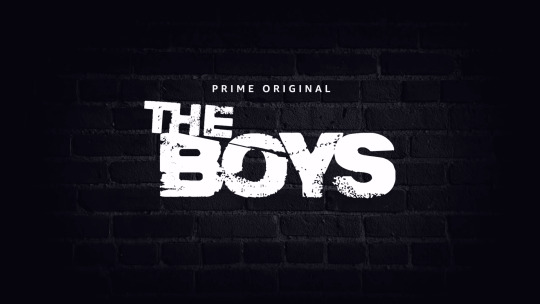
9. THE BOYS
Amazon offers up its own edgy, thoroughly adult superhero property with this darkly funny antiheroic gem based on the cult Garth Ennis comic, expertly adapted by Supernatural creator Eric Kripke. Karl Urban dominates as Billy Butcher, the foul-mouthed, morally bankrupt “leader” of a makeshift crew of mercenaries, hitmen and psycho killers devoted to “taking care of” superheroes when they inevitably go bad. Season 1 ultimately serves as an origin story, showing how the team come together, laying quality groundwork for the incoming sophomore tour that promises to open the already fascinating world out significantly.


8. PREACHER (SEASON 4)
More Garth Ennis, namely this blinder of a closing season for AMC’s consistently impressive adaptation of his best known series for Vertigo comics. Surprisingly epic, deliciously subversive and constantly, darkly hilarious, this thoroughly non-PC series from showrunners Sam Catlin, Evan Goldberg and Seth Rogen (yes! I Know!) certainly went out on a high note, providing its loyal followers with perfectly-pitched bow-outs and sometimes heartbreaking goodbyes for all its players, especially its dynamite leads, Dominic Cooper, Ruth Negga and, in particular, Joe Gilgun as unapologetic bad boy vampire Cassidy. A worthy end to one of my all-time favourite TV shows.
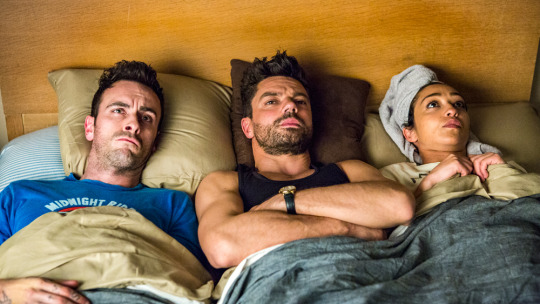
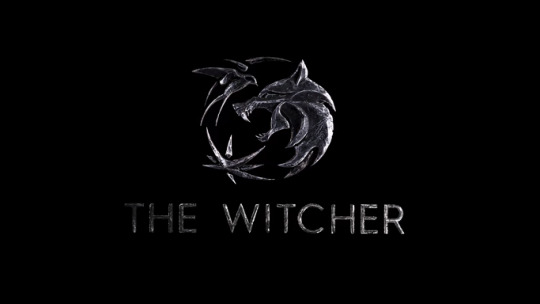
7. THE WITCHER
While it’s clearly taken its look from the wildly successful video games, Netflix’s second most ambitious long-form offering of the year takes its lead from the fantasy book series by Polish author Andrzej Sapkowski that started it all. With its somewhat episodic set-up and decidedly twisted narrative timelines, it take a few chapters to get the hang of it, but there’s plenty to draw you in, from the exotic world-building to the frenetic action and compelling collection of richly crafted characters. Henry Cavill is the titular hero, lovably grouchy mutant monster-hunter Geralt of Rivia, but the real scene-stealer is co-star Anya Chalotra as roguishly self-serving mage Yennefer of Vengenberg.


6. CARNIVAL ROW
One of the year’s two big sleeper hit TV surprises for me was this inventively offbeat allegorical Amazon fantasy series from The 4400 creator René Echevarria and screenwriter Travis Beacham. Orlando Bloom and Cara Delevigne are the star-crossed lovers at the heart of this intriguingly dark and dirty murder mystery thriller set in Victorian London-esque city-state the Burgue, in which humans struggle to co-exist alongside a struggling disenfranchised underclass of fae (fairies, fawns, centaurs and the like). The racial turmoil undertones are writ large throughout, but this is far more well-written and lavishly appointed than you might expect on first glance, and almost ridiculously addictive viewing.


5. LOVE, DEATH + ROBOTS
My other big TV surprise was this wonderfully bizarre sci-fi anthology series of animated shorts from Netflix, mostly adapted from an eclectic selection of short stories from a wide range of top-notch literary talent including Peter F. Hamilton, John Scalzi, Marko Kloos and Alastair Reynolds (a particular favourite of mine). As you’d expect from the brainchild of Deadpool director Tim Miller and producer David Fincher, this is edgy, leftfield stuff, frequently ultra-violent and decidedly adult, and the wildly varied nature of the material on offer makes for a decidedly uneven tone, but there are some absolute gems on offer here, my favourite being Suits, an enjoyably simple tale of salt-of-the-earth farmers on an alien world utilising clunky mech suits to protect their settlement from rampaging giant xeno-bugs.
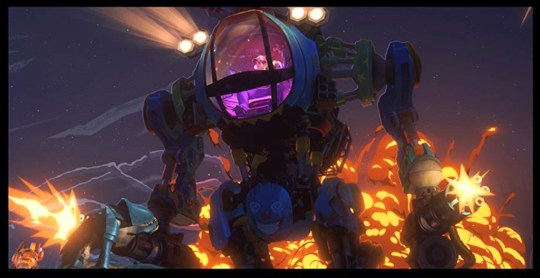
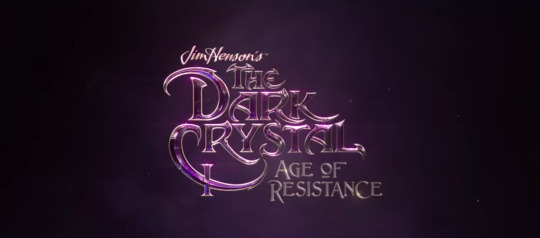
4. THE DARK CRYSTAL: AGE OF RESISTANCE
The show with the biggest cinematic wow factor in 2019 had to be this long-awaited prequel series to Jim Henson’s classic fantasy movie masterpiece, created for Netflix by, of all people, Louis Leterrier (yes, the director of The Transporter, Now You See Me and Clash of the Titans, if you can believe it). The technology may have evolved in leaps and bounds, but there’s a wonderfully old school vibe in the delightfully physical puppet effects used to bring the fantastical world of Thra and its denizens to life, so that it truly does feel like it’s based in the same world as the film. This was EASILY the most visually arresting show of 2019, packed with exquisite character, creature and set design that perfectly complements the awesome work done by Henson and Brian Froud on the original, while the writers have created a darkly rich narrative tapestry that makes Thra seem a more dangerous place than ever.

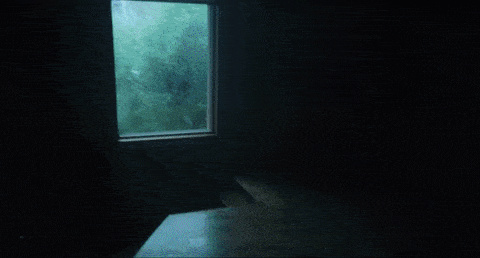
3. THE UMBRELLA ACADEMY
I was a HUGE fan of My Chemical Romance frontman Gerard Way’s magnificently oddball alternative superhero comic, so when I learned that Netflix were adapting it I was a little wary because I knew how spectacularly hard it would be for ANY showrunners to get right. Thankfully Steve Blackman (Fargo season 2) and Jeremy Slater (The Exorcist TV series) were the right choice, because this perfectly captured the outsider nature of the characters and their endearingly dysfunctional family dynamic. Ellen Page, Tom Hopper (Black Sails, Merlin), David Castañeda and Emmy Raver-Lampman are all excellent as the more “functional” Hargreeves siblings, but the show is roundly stolen by Misfits star Robert Sheehan and Nicky, Ricky, Dicky & Dawn’s Aidan Gallagher as nihilistic clairvoyant Klaus and the old-man-in-a-child’s-body sociopath known only as Number Five. Consistently surprising and brilliantly bonkers, this was definitely the year’s most wonderfully WEIRD show.

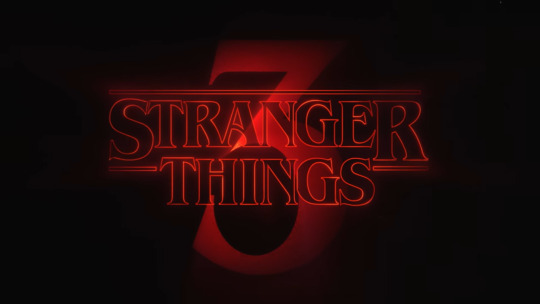
2. STRANGER THINGS (SEASON 3)
Writer-director duo the Duffer Brothers’ ultra-nostalgic 80s-set coming-of-age sci-fi horror series remains the undisputed jewel in Netflix’s long-form crown with this consistently top-drawer third season expertly maintaining the blockbuster-level standards we’ve come to expect. This year the cross-dimensional shenanigans have largely been jettisoned, replaced by a gleefully nasty through-line of icky body horror that would make major influences like David Cronenberg and Stuart Gordon proud, as perennial teenage bad boy Billy Hargrove (the fantastically menacing Dacre Montgomery) becomes the leader of an army of psychic slaves under the control of the Upside Down’s monstrous Mind Flayer. The kids are all brilliant as always, Winona Ryder and David Harbour really get to build on their strong-yet-spiky chemistry, and the show is almost effortlessly stolen by Joe Keery as one-time golden boy Steve Harrington and series-newcomer Maya Hawke as his nerdy new foil Robin Buckley, who were very nearly the cutest couple on TV in 2019. Another gold standard season for a true gold standard show.


1. GOOD OMENS
Sadly, legendary author Terry Pratchett died before he could see the adaptation of one of his most beloved novels (and one of my all-time literary favourites too) see the light of day, but at least his co-author Neil Gaiman was around to bring it to fruition with the aid of seasoned TV director David Mckinnon (Jekyll, Doctor Who, Sherlock), and the end result sure did him proud, perfectly capturing the deeply satirical voice and winningly anarchic, gleefully offbeat and gently subversive humour of the original novel. David Tennant and Michael Sheen could both have been born to play Crowley and Aziraphale, the angel and demon nominally charged with watching over the young Antichrist in preparation for his role in the End Times, even though they would both much rather the world just went on quite happily the way it is, thanks very much. This is about as perfect an adaptation as you can get, the six hour-long episodes giving the surprisingly complex story time to breathe and grow organically, and the result is the most fun I spent in front of my TV this year.

#best TV 2019#watchmen#the boys#preacher#the witcher#carnival row#love death + robots#love death & robots#the dark crystal age of resistance#The Umbrella Academy#stranger things 3#good omens
294 notes
·
View notes
Text
So ...about "The Warrior in the Woods"...
Okay so this morning, this squiggle meister took a read at a preview for one of the stories that would be featured in the upcoming RWBY: Fairy Tales of Remnant set to release this year September 15th. It’s titled “The Warrior in the Woods”. If you haven’t read the small preview of the tale for yourself, you can find it right here on kobo.com where you can also preorder a digital copy of the book.
Speaking of, does anyone know where one can preorder a hardcopy version of this book? Or do I have to wait till it comes out in September to order the hard copy version then? Of all the upcoming RWBY-related projects that I was most looking forward to, it’s definitely this one and I’d definitely love to own a tangible copy of the book for myself if it’s available.
Anyways let’s talk about “The Warrior in the Woods” story specifically. Obviously I read it and without spoiling much from the short story, all I can say is that I definitely loved it. I think right out the gate, I’m going to peg this one as one of my favourites of the fairy tales purely because I found it to be a rather sweet one.
[SPOILERS AHEAD! NUFF SAID]
Plot-wise, the tale focuses on a young boy who ends up getting lost in the woods after wandering out too far from his home village while out playing with his friends. Basically the gist is that the people of this boy’s village have lived in peace away from the Grimm; so much so that the villagers; as well as its youths had never encountered a creature of Grimm before.
While lost in the forest, the boy is attacked by a Bolbatusk Grimm (I believe) during which he is rescued by a woman with silver eyes. In a nutshell, the boy is saved by a Silver Eyed Warrior which leads into a routine where every year from the day they met, the young boy would always return to the forest in the hopes of meeting the Silver Eyed Warrior again.
Let’s get into what I liked about this tale: The whole relationship between the young boy and the Silver Eye who I will hereby refer to as “Warrior”. From the get-go, it’s very evident that the Boy is infatuated with the Warrior but what I found adorable was that this boy’s interest in the Warrior was what encouraged him to brave the forest in the hopes of seeing her time and time again for two to three more years (I believe if I’m remembering correctly). And what I thought was interesting was that each time the boy ventured into the forest, he was described as being much braver and stronger than previous encounters.
During his first encounter with the Warrior, the boy was completely powerless during his first run in with a Grimm but as the years went by, the boy would learn from his experiences and would go in a little more prepared each time. While he still needed the Warrior to come to his aid (which she always did in spite of saying she wouldn’t save him and telling him never to return), I definitely dug how much the boy began to mature with each time he met the Warrior as reflected in his growing combat competency.
I liked the angle of the Boy being motivated to become a stronger person thanks to his meeting with the Warrior. I liked that just as much as I love the angle of how much the Warrior in turn grew to care for the Boy in her own way.
When we first meet the Warrior, she described as strong and beautiful (by the Boy) yet hardened and reserved due to her past experiences since according to her story, her kind were known to be hunted and slain by humans because of their power (as we the readers are aware of from the main series as of V4-V6).
So due to this, the Warrior has basically settled into a life of solitude and survival. This is even reflected in her initial attitude towards the Boy since after saving him the first time, she warned him never to return again.
Unfortunately for the Warrior, she had underestimated the Boy’s persistence since he did return to her and each time they’d meet in the woods upon her saving him, the young boy would bring her gifts as a token of his appreciation and fondness of her as well as a symbol of their growing bond.
And in spite of pushing him away at first and all the times they would “meet” afterwards, I liked how it was shown how much the Boy had grown on the Warrior and how his compassion had warmed him up to her to the point that I think she began looking forward to seeing him in a way---or rather she expected him to always return to her in a sense.
Until one year when the boy returned to woods, he would find his Warrior gone. Whether that meant the warrior had eventually met her fate or simply moved on, I don’t know. It is of my assumption that the Warrior was ultimately killed in battle. The ending of story in regards to the Warrior’s fate felt a bit ambiguous to me. The story mentioned the possibility of the Warrior being dead but honestly never confirms it. Not really. So for me, I’m only assuming that the Warrior did die since that’s how the tale left her conclusion.
Now for the real meat of this post---the comparison that I’ve already seen my Rosegardening peers make after reading this tale and now I’m going to chip in and basically say the same thing too.
Yes, the Boy and the Warrior definitely remind me of Oscar Pine and Ruby Rose.
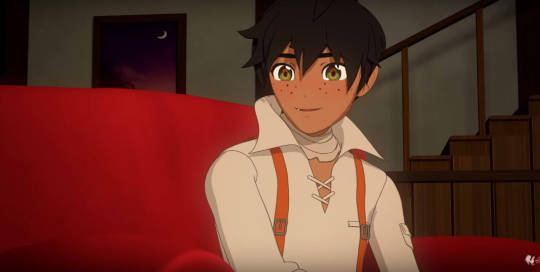

It’s actually kind of hard to NOT make that stark comparison.
After finishing the tale, my theory is that the Boy was probably around the same age as Oscar is currently when he first met the Warrior. Probably 14-15 years of age and I’d like to think that he was probably 17-18 years old by his third and last encounter with the Warrior since later in the story, the author began referring to the boy as a “young adult man” (I believe).
As for the age of the Warrior, that one has me stumped to be honest. In the story, she is described as “woman”. I also recall the author describing the Warrior having strands of silver in her hair which made me think she was probably a much older woman---probably in her 40s.
Then again…women in their late 20s to early 30s can start showing signs of grey hair. Not to mention that people as young as 18 can start greying out due to family background and stress.
So…in that case, I dunno. Going off the featured artwork of the Warrior in the preview, she doesn’t look to be that old at all. So I’m going to safely assume, that compared to the Boy, she was probably in her late 20s or so.
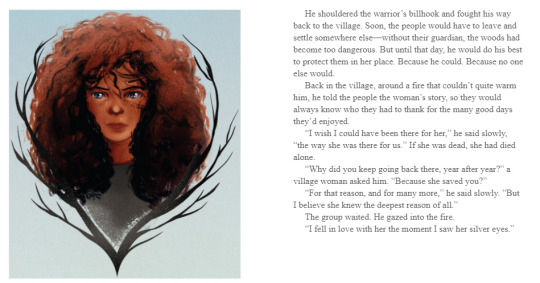
That’s my cookie crumb deduction.
Either way, here we have yet a second example of a RWBY content featuring an adolescent male expressing romantic interest in an older woman with the writers behind the tale treating this dynamic as something wholesome and rather quite sweet. I would be lying through my teeth if I said I wasn’t rooting for the Boy and the Warrior to end up together-together. I am NOT sorry. My hopeless romantic of a shipping heart couldn’t help but find the boy’s interactions with his Warrior to be adorable since the story treated it that way.
It’s for this reason why despite the story’s ending, a part of me is still kind of hopeful that the preview isn’t the whole story for that specific tale; y’know what I mean? Like I’m kind of hoping that once the full book is out, there will be more to the Warrior in the Woods story that potentially reveals the young boy and the Warrior reuniting and having their happy ending together.
I could be completely wrong here but dagnabbit, they got me again folks. Not gonna lie. I want this now. I need Roosterteeth to adapt this book into a new animated series like World of Remnant. These characters don’t even have names and already I adore their bond and story together.
Overall, as you can tell, I’m smitten with the relationship between the Boy and his Warrior. And the ending where the boy; now a man, professes his love for his Warrior since the day they met only made me gush even more over this pair. In the squiggle shire, we stan “A Boy and his Warrior”. That’s what I’m going to call this pair.
I guess the point that I’m trying to make here is that it’s nice to see a love---even if it was unrequited in a sense---between a young man and an older woman be treated respectfully in literature. We live in a time when people would screech over the slightest age difference while ignoring the context of the relationship itself.
Though only a short story, I’m happy that the author of Fairy Tales of Remnant portrayed the rapport between the Boy and his Warrior as a sweet relationship.
It’s here where I’m reminded of the Rosegarden dynamic. For the most part, the CRWBY Writers have always treated the bond between Ruby and Oscar as wholesome. It’s what makes the arguments against it in regards to their small 2-year age different sound so silly in my opinion.
So that being said, thank you CRWBY and E.C. Myers for creating yet another sweet dynamic between a young adolescent teenage boy and an otherwise “older” and much more experienced Silver Eyed Warrior.
“…I wish I could have been there for her,” he said slowly, “the way she was there for us.” If she was dead, she had died alone.
“Why did you keep going back there, year after year?” a village woman asked him. “Because she saved you?”
“For that reason, and for many more,” he said slowly. “But I believe she knew the deepest reason of all.”
The group waited. He gazed into the fire.
“I fell in love with her the moment I saw her silver eyes.”
- “The Warrior in the Woods” | Fairy Tales of Remnant by E.C Myers
I would like to say more about this story but I’m afraid right now, all I can give are my first impressions. In a way, my mind is all a tizzy with how much this tale got me thinking in respect to the growth and potential future of the Rosegarden relationship.
I’m not trying to imply that I’m taking this as a sign of their endgame. Nah. That would be too premature of me. But it did get me thinking and excited for them in respect to Oscar’s continued development.
I think what I loved and enjoyed the most out of this tale is how much the Boy reminded me of my favourite little prince and how his endearing love for his Warrior made me think of how much Oscar looks to Ruby as someone to believe in and perhaps, even fall in love with.

And what got me the most was the line about the Boy wishing he could’ve been there for his Warrior the same way she had been there for him and by extension the people of his village.
That line hit me deep since that’s exactly how Ruby has been with Oscar from the moment the two met!

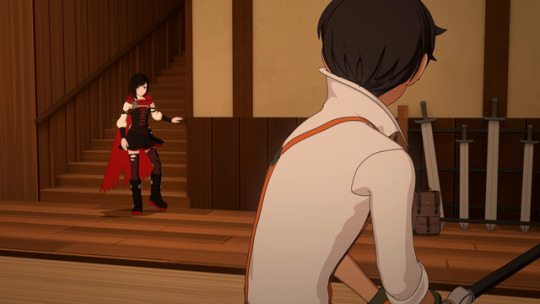



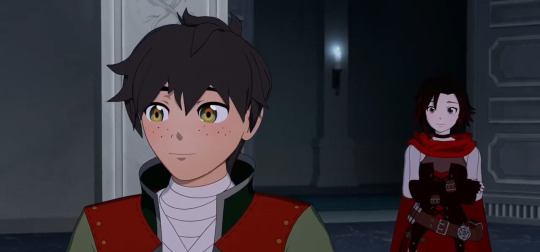
Out of everyone amongst the hero team, Ruby has supported Oscar the most from the start. She’s always stood by him. Looked out for him. Protected him and believed in him or supported him even when others were reluctant about that.
She was the first person to mention how brave he is in spite of his fears. And above all else, Ruby inspired Oscar to be a stronger person. Not just for himself and the huntsmen in his care; like his teammates. But for her.





The Boy was inspired by the Warrior to become a stronger man, not just for himself but also the people of his village. Not only that but I loved how the young man even wanted to be strong enough to support his Warrior too
“…I wish I could have been there for her,” he said slowly, “the way she was there for us.”
I love that. I love that line because it reminds me of everything I’ve been saying about Oscar and his inspiration from the Little Prince.
What was the lesson the Fox taught the Prince? Love and responsibility. To be responsible for the people who love and support you just as much as you love and support them.
I got the same vibe from this story from the relationship between the Boy and the Warrior. The sad reality is that the Boy never got a chance to be there entirely for his Warrior and thus she was believed to have died alone; never truly knowing the whole truth of how much she meant to him and how much he loved her.
This is a parallel that I’m hoping for in V8 in respect to Oscar’s side of the story with him on his own in Mantle with only Oz. I’m hoping that during his journey back to Atlas; Oscar comes to terms with his feelings for Ruby. What would even be amazing is if at some point, the tale of the Warrior in the Woods is brought to life and told in the main series.
I would absolutely love it if at some point Oz would tell Oscar the Tale of the Warrior in the Woods when the little prince starts thinking about his rose. Even better, what if…“The Warrior in the Woods” is how Oscar learns the “Fox’s lesson to the Little Prince”?
Imagine if…Oz, fairy tale and it through hearing that story and learning of the Boy’s dedication to his Warrior that it helps Oscar realize how much Ruby means to him!
Overall, what I’m mainly anticipating is for Oscar to come to terms with his true deepest feelings for Ruby. For me, I would love it if Oscar really is no different than the Boy in the fairy tale.
What would even be more of a trip is if Oscar is a descendant of the Boy or meets someone in his travels who is related to that boy in the tale and it’s a story and lesson that’s been passed down throughout their family for generations.
I know that might be pushing it a little bit but it’s not a bad concept. Either that or…Oz is the one who tells Oscar the Tale of the Warrior in the Woods. It would make sense for Oscar to hear that tale through Oz since, ironically, isn’t he the one who compiled the Fairy Tales from Remnant book? Correct me if I’m wrong. I know his notes are a feature of the book.
Anyways, either way, I want to see Oscar realize how much he loves Ruby and it’s his love for her that further fuels his drive to support and protect her.
The Boy never got his chance to be there to protect his Warrior. While he kept her legacy alive through her story, the sad truth is the Warrior died alone never knowing how the Boy felt for her.
This is something I’m expecting NOT to be repeated with Rosegarden. I want to see Oscar promise to Ruby that he will always be there for her; fighting by her side for the cause they both believe him: Saving humanity. And above all else, I want to see Oscar realize his love for his rose in the hopes of one day telling her that to her face.
While I don’t know if we’ll have Ruby return Oscar’s feelings. Regardless, this is what I’m anticipating to see at least for Oscar’s side of things and this fairy-tale gave me more believe for that. Then again, it’s just a story and only time will really tell for what the CRWBY Writers have in store for V8. But a squiggle meister can wonder and hope, right?
In the meantime, like I said, I’m excited for the official release of Fairy Tales of Remnant.
I don’t plan on reading any more of the previewed stories though. I don’t know about some folks, but for this squiggle meister, I more want to wait till the book is out so I can hopefully get a hard copy because I do want to own the book itself.
That way I can read it through, make notes of things and always have that stuff on hand when I want to make a point of analysis for future musings and headcanon posts. Plus I really want that book. This is one of the sure-fire times where RoosterTeeth will actually get my money. (Still waiting patiently on dem Oscar merch though).
So with that being said, I think “The Warrior in the Woods” will be the ONLY story preview I will read and talk about for now.
I know there are previews for the other stories available but I’d rather not read them now. I think I’ll wait for the full book to go through and give my official thoughts then. We’ll see. Until then, this is all I got to say for now folks.
~LittleMissSquiggles (2020)
52 notes
·
View notes
Text
Favorite film discoveries of 2019
Every year, my new-to-me favorites list always shocks me in some way. This year, the sheer amount of movies made in the 2010s on display is INSANE by my standards. Of course, most of the modern movies here are throwbacks or tributes to older styles of cinema, so maybe it’s not that shocking in the long run.
Another running trend this year: movies that are old but not as dated as we would wish. Many of the older films here deal with xenophobia and political strife in ways that still feel shockingly prescient today-- the more things change...
ONCE UPON A TIME... IN HOLLYWOOD (DIR. QUENTIN TARANTINO, 2019)
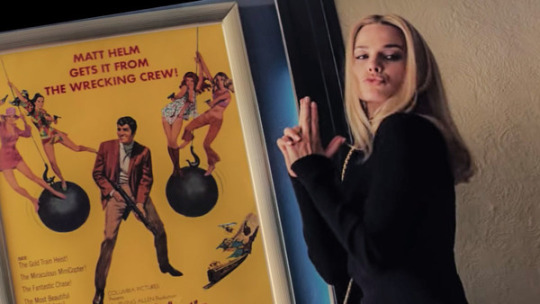
I never thought the day would come where my favorite movie of the year would actually be made after the 1970s, let alone by Quentin Tarantino. Then again, this movie is all about the end of Old Hollywood as well as a big love letter to the 1960s, so maybe it’s not that shocking a state of affairs. I adored this movie, the level of detail, the laidback yet elegaic vibe, the comedy and the relationships between all the characters. It was one of those movies where I loved even the scenes where nothing seems to be happening at all-- I mean, who knew Brad Pitt feeding his dog and watching TV could be entertaining?? But it is and I can't wait to see this one again!
INTENTIONS OF MURDER (DIR. SHOHEI IMAMURA, 1964)
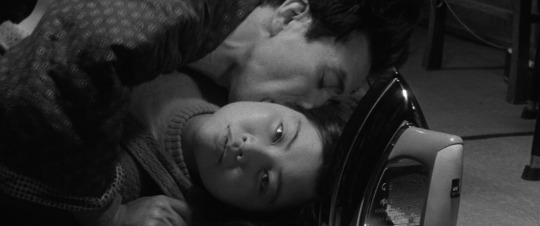
Intentions of Murder has an insane premise, one that runs the risk of being tasteless: a housewife in a miserable, exploitative marriage is raped by a sickly burglar during a home invasion. Even worse, she can’t shake him, as he’s suddenly infatuated and wants her to run away with him to the city. And weirder still: her current existence is so miserable that she’s TEMPTED. While abuse and rape are grim subjects for any story, Intentions is actually about a woman coming into her own and finally standing strong against all these men trying to use her. It’s a weird blend of drama and dark comedy, a truly savage satire on patriarchy and class-snobbery.
JOKER (DIR. TODD PHILLIPS, 2019)
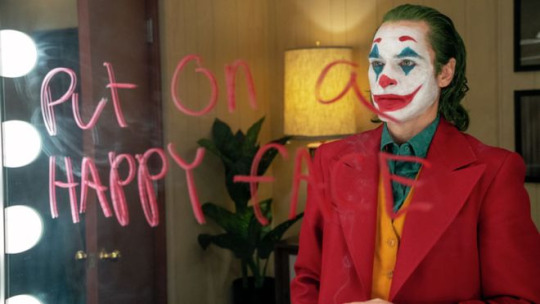
I went into this movie expecting to think it was overhyped and when I first left the theater, I was all ready to say “it’s good but not THAT good.” But it ended up haunting me for weeks afterward, and I found myself thinking about how everything just tied up so well together, from the grotty urban hellscape which serves as the setting to Phoenix’s brilliant performance. It reminded me a lot of A Clockwork Orange in how intimate it lets you get to this violent man while never pretending he is someone to be glamorized or imitated.
SIMON (DIR. MARSHALL BRICKMAN, 1980)
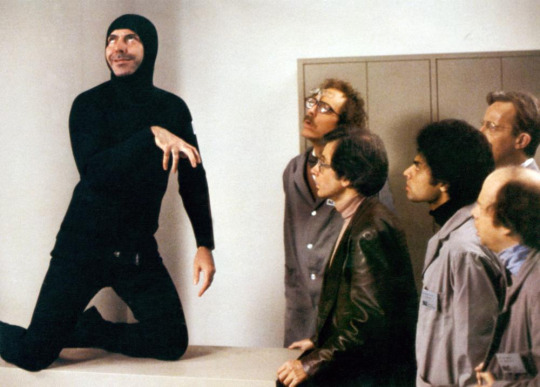
How do I even describe Simon? Alan Arkin is brainwashed by a group of overpaid intellectuals into believing he is descended from an alien toaster. Then he gets a messiah complex and starts gathering disciples as he rails against television, condiment packets, and muzak. It’s a little uneven at times, sure, but the satire is really inspired. The whole thing is like a combination of Mel Brooks, Stanley Kubrick, and Woody Allen’s styles, and it is quite hilarious for those who thrive on cult oddities.
PEEPING TOM (DIR. MICHAEL POWELL, 1960)
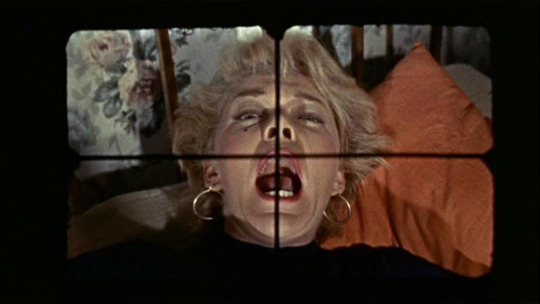
Though it came out the same year as Hitchcock’s Psycho and has been nearly as influential for horror cinema, Peeping Tom remains underseen by everyone save for film theorists. And what a shame that is, because this movie is more frightening than Psycho. Sure, that may be because Psycho is so predominant in popular culture and just so influential that it no longer has the same shock value, but there’s something about Peeping Tom that gets under my skin, something sad, even disgusting. I felt dirty after watching it-- and this is 2019!
MIDNIGHT MARY (DIR. WILLIAM WELLMAN, 1933)
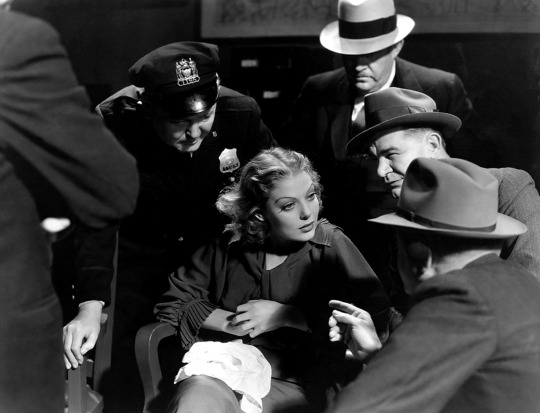
Loretta Young got one of her juiciest roles in this pre-code crime drama. Her Mary Martin is more than just a good girl forced into criminal circles-- she’s a complicated creature, compassionate and desperate and lonely and bitter and sensual all at once. This movie is a fast-paced, beautifully filmed ride, cloaked in that Depression-era cynicism that makes pre-code Hollywood of such interest to movie geeks the world over.
WILD BOYS OF THE ROAD (DIR. WILLIAM WELLMAN, 1933)
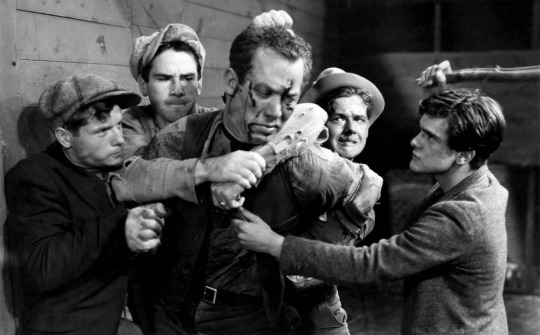
Wild Boys of the Road is a quintessential Depression-era movie, relentless in its bleakness and rage. That the main characters are all starving kids only looking for work makes their struggles all the harder to watch. William Wellman is quickly becoming one of my favorite directors: his gritty style and compact storytelling are just perfect for a ripped-from-the-headlines drama such as this. And the “happy” ending has one little moment that just knocks any smile you have right off your mug. Absolutely see this.
THE RUSSIANS ARE COMING, THE RUSSIANS ARE COMING (DIR. NORMAN JEWISON, 1966)
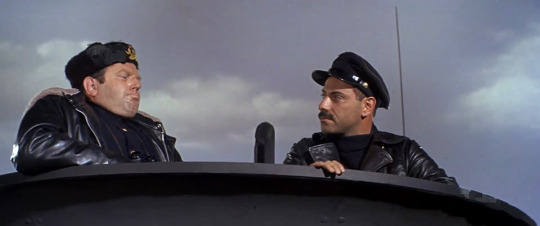
Sometimes, when you watch a movie only because a favorite actor is in it, you get subjected to pure trash like Free and Easy (oh, the things I do for Buster Keaton). Other times, you get cute gems like The Russians are Coming, The Russians are Coming, which, as you probably guessed, I mainly sought out for Alan Arkin. But the whole movie is hilarious, the best kind of farce comedy, populated by enjoyable characters and a sweet-tempered humanism that grounds the wackiness. While a little overlong, this movie is quite underrated-- and sadly, its satire of American xenophobia and Cold War panic is not as dated as we would like to believe.
ALL THE PRESIDENT’S MEN (DIR. ALAN J. PAKULA, 1976)
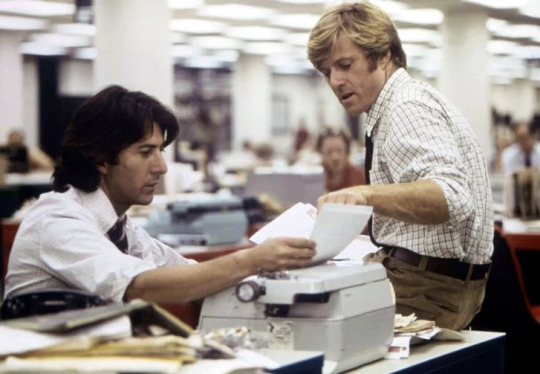
Who knew a political thriller where most people know the twist could be so intense and riveting? It’s about as nonsensical as feeling suspense when you watch a movie about the Titanic and hope the boat won’t sink-- but damn, it’s magical. All the President’s Men is real white-knuckle stuff, with Robert Redford and Dustin Hoffman projecting both youthful excitement and deep panic as they proceed with their investigation. It scarcely seems to have aged at all.
WHISPER OF THE HEART (DIR. YOSHIFUMI KONDOU, 1995)
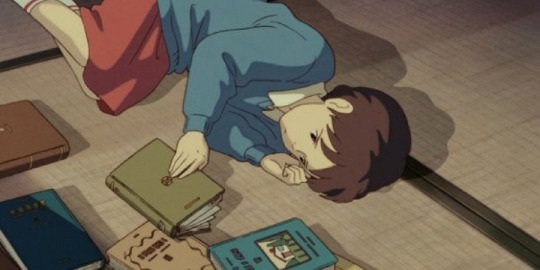
There’s a scene near the end of Whisper of the Heart where the protagonist Shizuku shows the finished first draft of her fantasy novel to her first reader, the grandpa of one of her schoolmates. She weeps because it isn’t the perfect image she had in her head, despite how hard she worked on it, but the old man tells her that it takes polishing and discipline to make the work come to its full potential. Few movies about artists are so honest about how hard it can be, how unsupportive others can be in their demand that everyone be “practical.” As a writer who struggles to create and constantly doubts herself, this movie spoke strongly to me. I recommend it to any creative person.
THE PHANTOM OF THE PARADISE (DIR. BRIAN DE PALMA, 1976)
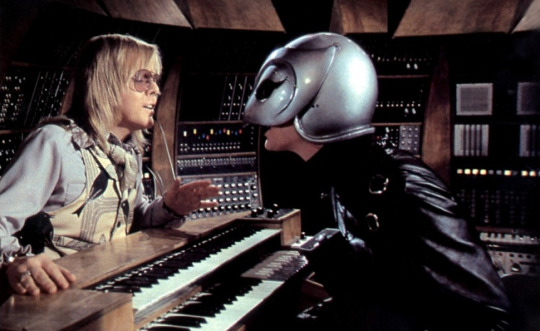
I’d been wanting to see this movie since my high school phan days. Holy crap, is it WEIRDER than I could have ever imagined, a true camp masterpiece. I’m shocked it was never tuned into a stage show actually, but then again, we would miss those trippy camera angles and we wouldn’t have Paul Williams as one of the greatest villains of all time.
DUEL (DIR. STEVEN SPIELBERG, 1971)
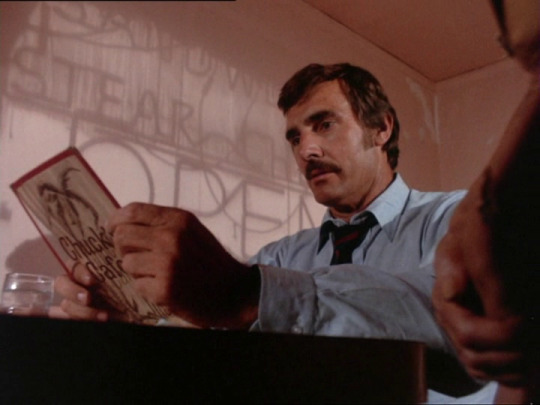
When people talk about the best movies made in the “Hitchcock without Hitchcock directing” tradition, why is Duel so seldom mentioned? The scene in the cafe, packed with paranoid tension and tense camerawork, alone should qualify it. Duel is most known as the movie which put the young Steven Spielberg on the map. It’s quite different from his later work, grittier and less whimsical for sure. Even the ending seems almost nihilistic, depending on how you view it. But damn, if it isn’t fine filmmaking.
CAROL (DIR. TODD HAYNES, 2015)
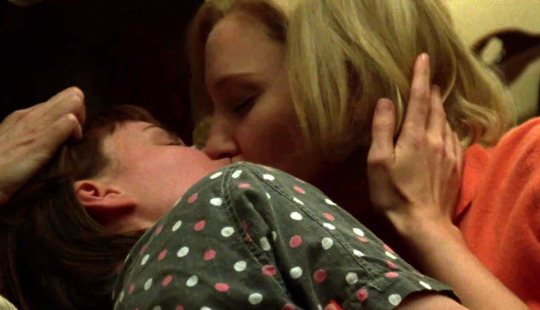
This gorgeous throwback to Douglas Sirk melodramas is also one of the best romantic movies I’ve seen in a while. Cate Blanchett and Rooney Mara have the sweetest, tenderest chemistry-- it was like seeing Lauren Bacall and Audrey Hepburn as love interests in a film. Unlike Sirk, there is little in the way of ripe melodrama here-- everything is underplayed, aching, mature. And I can say this is an adaptation that is better than the source book: it just feels so much warmer.
12 ANGRY MEN (DIR. SIDNEY LUMET, 1957
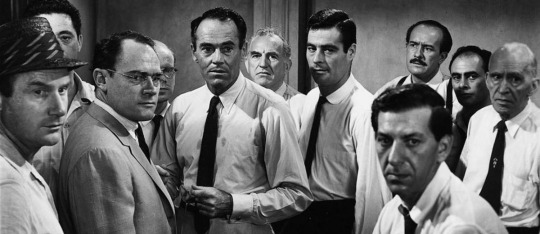
All I can say is that this was every bit equal to the hype. Common movie wisdom says people sitting and talking in a room is going to be boring on film, but movies like 12 Angry Men prove this is not so when you’ve got an excellently tense atmosphere, an inspired script, and a stable of fine actors to work with. Like The Russians are Coming, the Russians are Coming, this movie has not significantly aged-- much to society’s discredit.
A STAR IS BORN (DIR. GEORGE CUKOR, 1954)
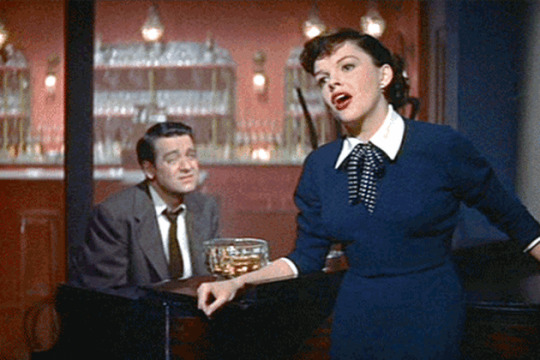
Another movie I went into not expecting to love as much as I did. When movies from the 20s or 30s tended to get remakes in the 1950s, I always find them too garish and big, victims of glossy Cinemascope and overlong runtimes. Compared to the lean 1937 classic original, I expected sheer indulgence from this three-hour remake. Instead, I got my heart torn out all over again-- the longer runtime is used well, fleshing out the characters to a greater degree. Judy Garland and James Mason both give what might be the best efforts of their respective careers, and the satire of the celebrity machine remains as relevant and scathing as ever.
BLANCANIEVES (DIR. PABLO BERGER, 2012)
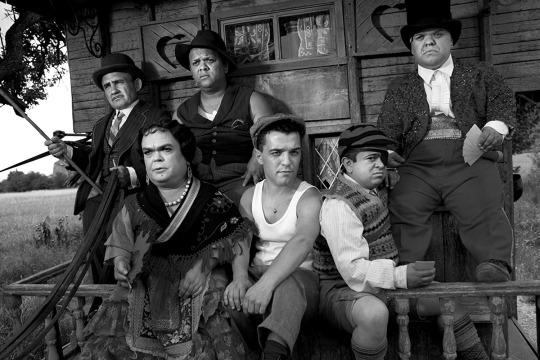
Oh, it feels like this movie was made for me specifically. It’s shot in gorgeous, expressionistic black-and-white. It’s set in the 1920s. It’s a clever adaptation of a classic fairy tale. It’s as funny and charming as it is bittersweet and macabre. Instead of more superhero movies, can we get more neo-silent movies like this? PLEASE?
THE FAVOURITE (DIR. YORGOS LANTHIMOS, 2018)
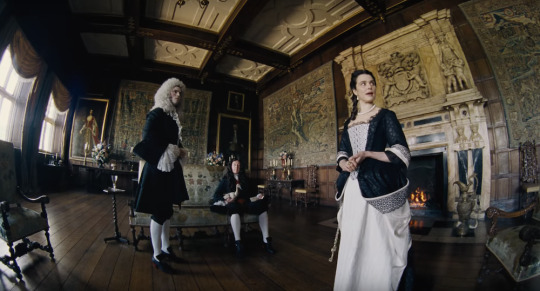
I’ve heard The Favourite described as a “bitchy lesbian Shakespeare play,” but this description, while a little true in terms of general tone, does not get to the heart of what makes this film brilliant. More than love or sex, this movie is about power-- particularly the corrupting influence of power. And it corrupts not only morals but love itself. Innocents become Machiavellian schemers. Lovers become sadomasochistic enemies. Good intentions turn to poison. This certainly isn’t a happy movie, but it is moving and, strangely enough, also hilarious. I was reminded of the chilly, satirical world of Kubrick’s Barry Lyndon more than once-- and for me, that is not a bad movie to be reminded of.
ON THE WATERFRONT (DIR. ELIA KAZAN, 1954)
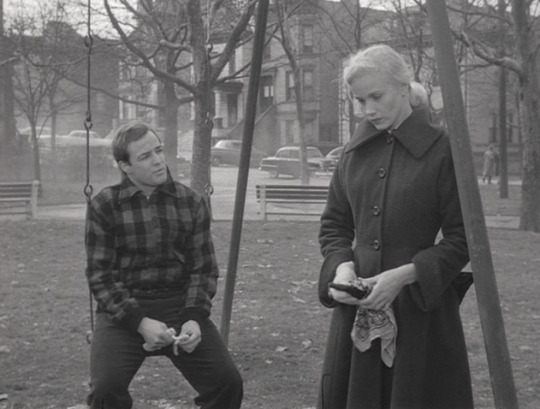
Another classic that’s been on my list forever that I was delighted to find worthy of its reputation. It’s a classic tale of redemption and social justice, perfectly acted and shot. While I still prefer A Streetcar Named Desire as far as Kazan is concerned, this might be a better movie in the objective sense. Actually, more than even Brando, Karl Malden is the acting highlight for me-- he plays a priest torn between staying silent or truly speaking for the Gospel by demanding justice for the poor parish he serves. Just brilliant work.
KLUTE (DIR. ALAN J. PAKULA, 1971)

A perfect thriller, just about, and a great example of the “NYC is hell on earth” subgenre of the 1960s and 1970s. Jane Fonda is a revelation: she feels so real, not at all like a starlet trying to seem normal if you know what I mean.
KISS KISS BANG BANG (DIR. SHANE BLACK, 2005)

As far as subversive noir goes, this is the most entertaining. I would put it up there with The Big Lebowski as far as goofy takes on Raymond Chandler are concerned-- I don’t even really know what to make of it, but I laughed my ass off anytime I wasn’t going “WHAT???”
What were your favorite film discoveries in 2019?
#thoughts#peeping tom#simon 1980#kiss kiss bang bang#intentions of murder#once upon a time in hollywood#joker#a star is born#blancanieves#the russians are coming the russians are coming#all the president's men#whisper of the heart#carol#the favourite#12 angry men#klute#the phantom of the paradise#on the waterfront#wild boys of the road#midnight mary#duel
151 notes
·
View notes